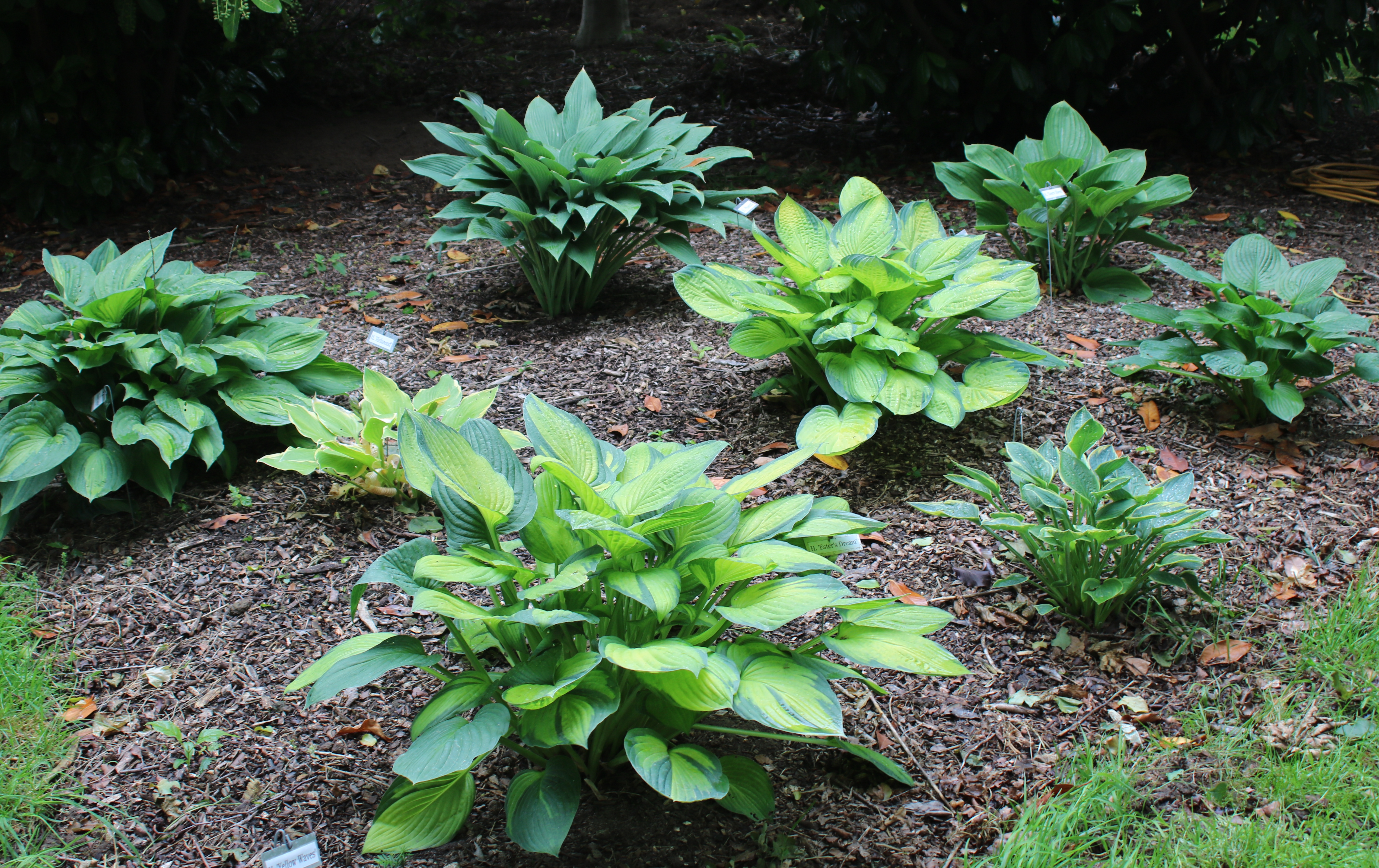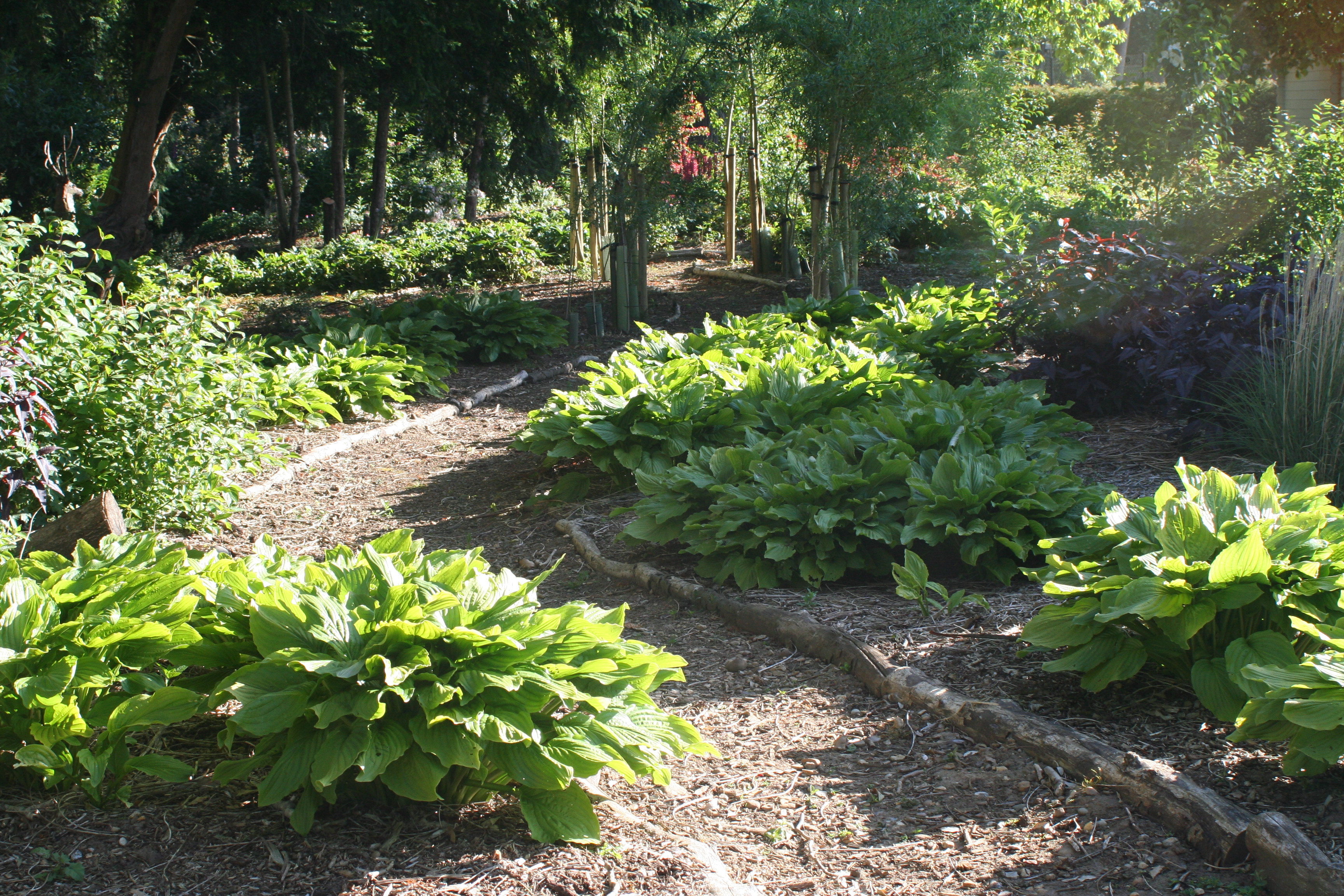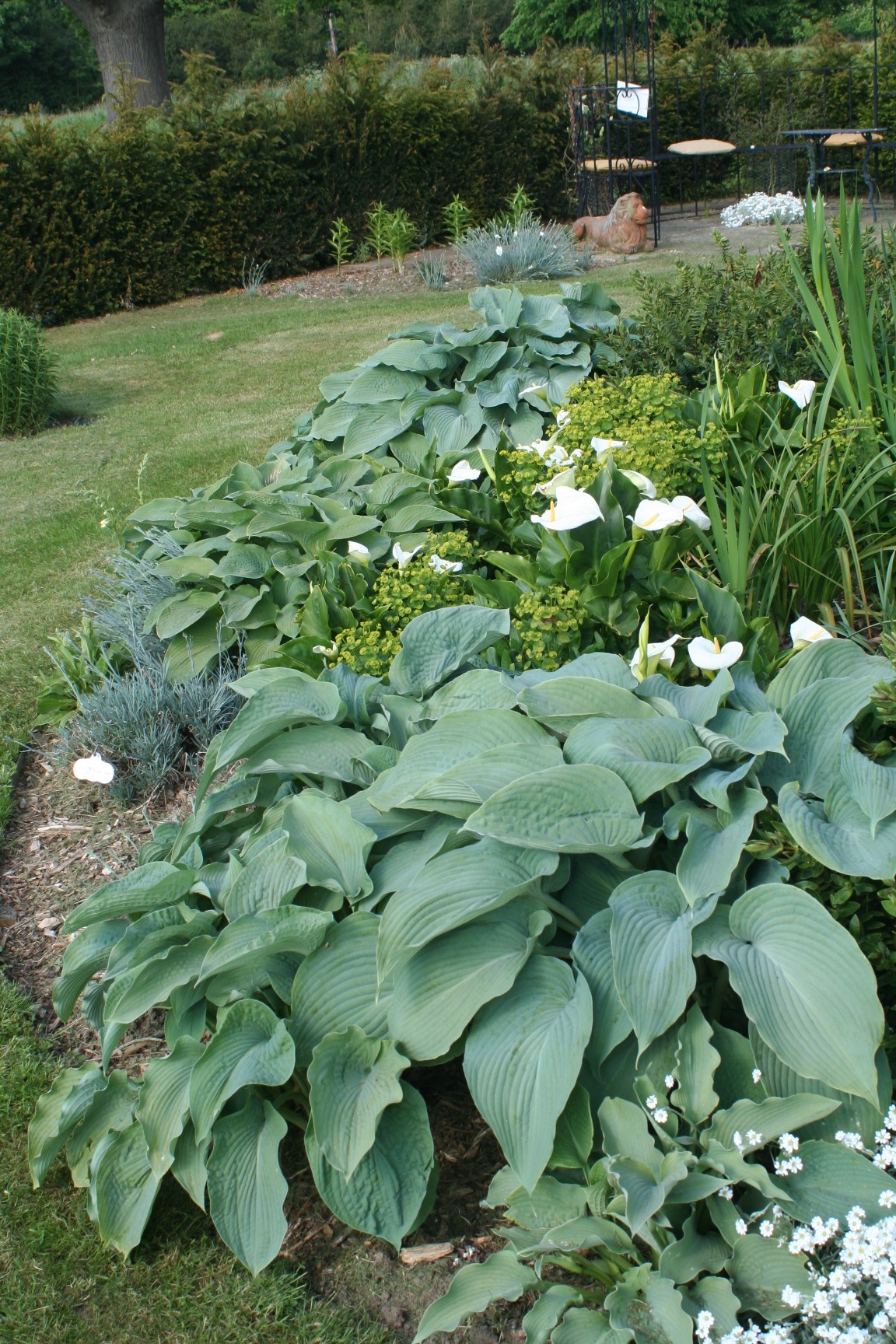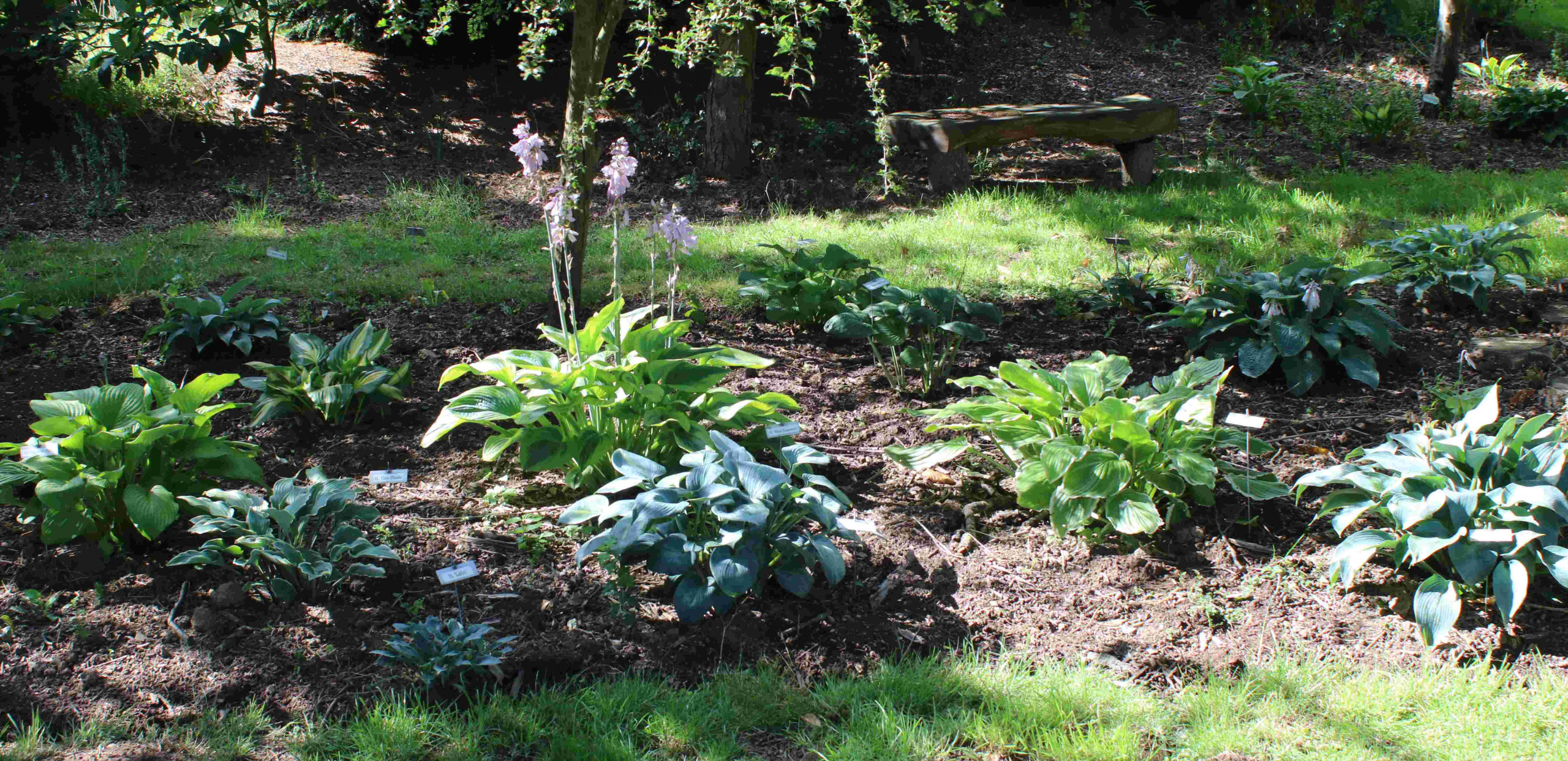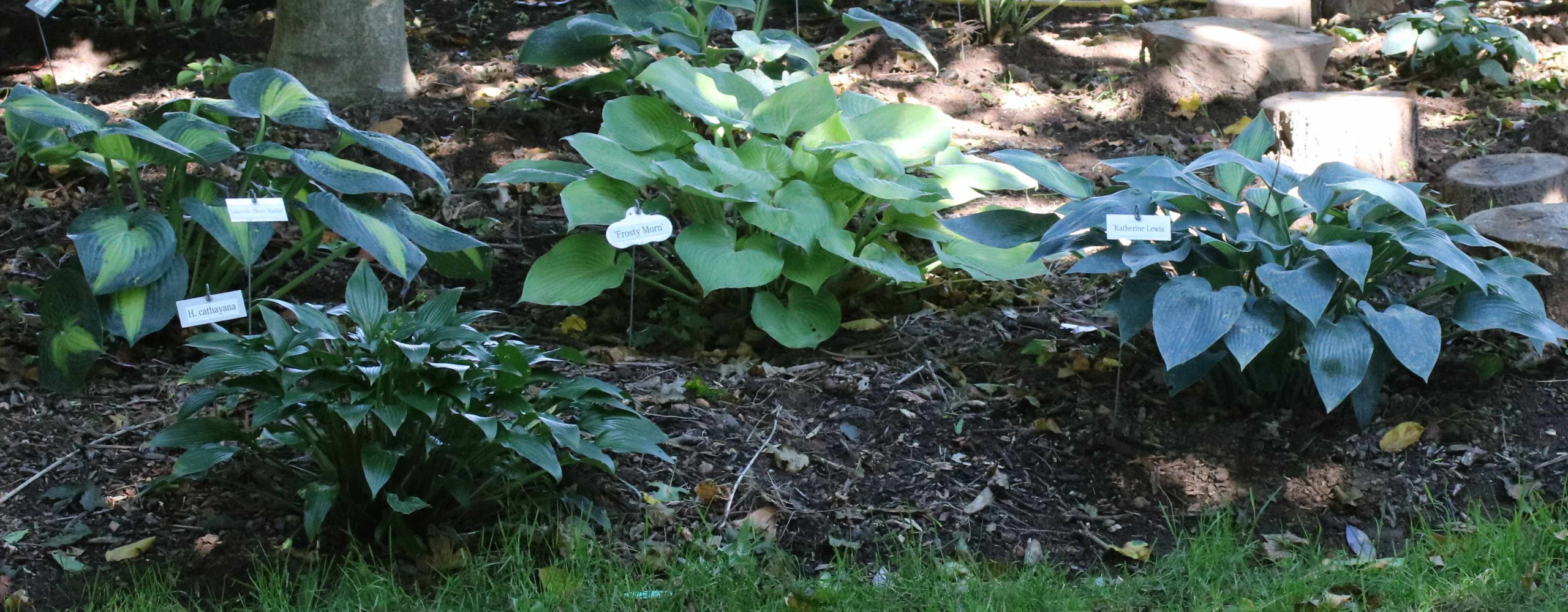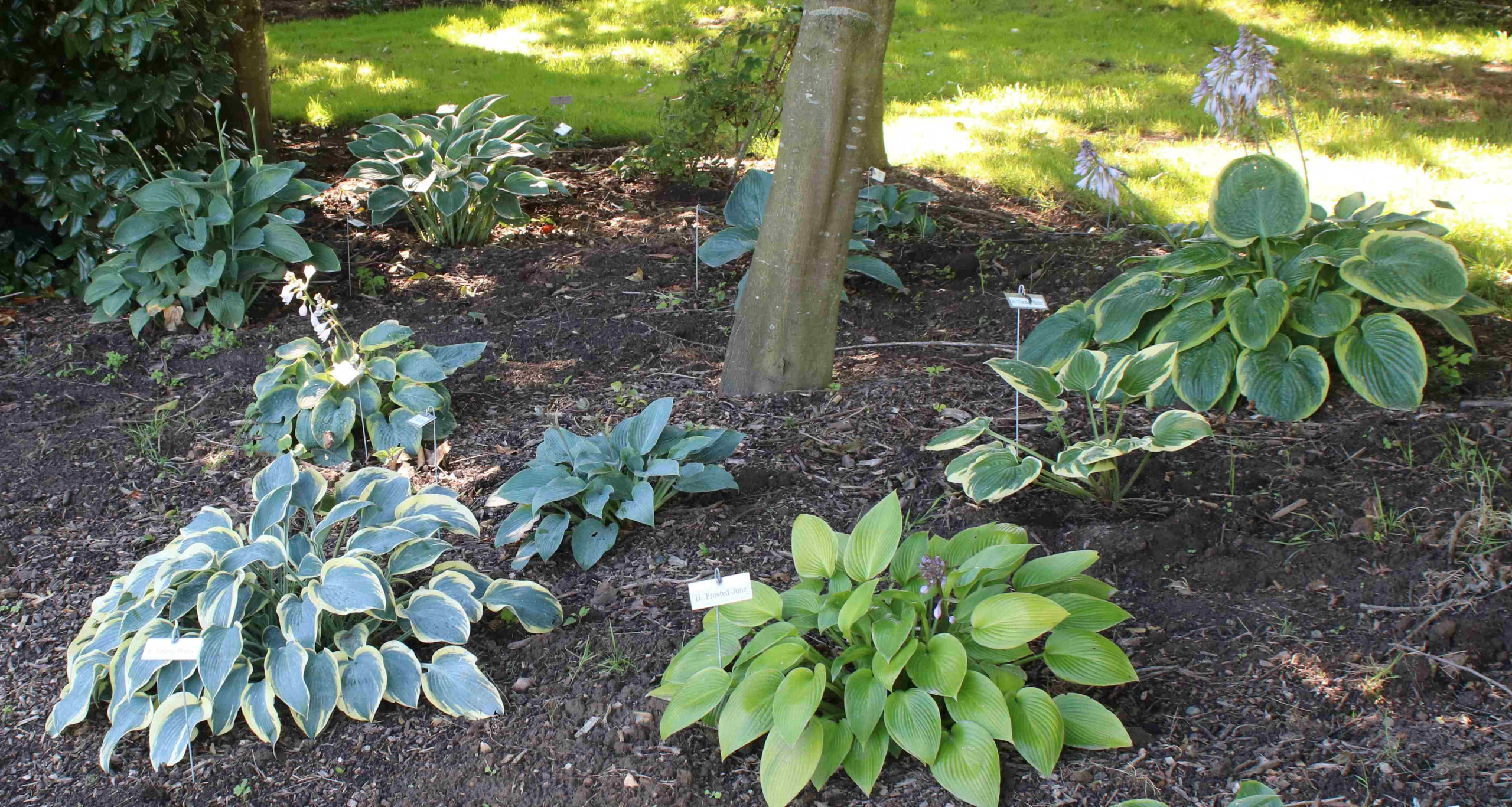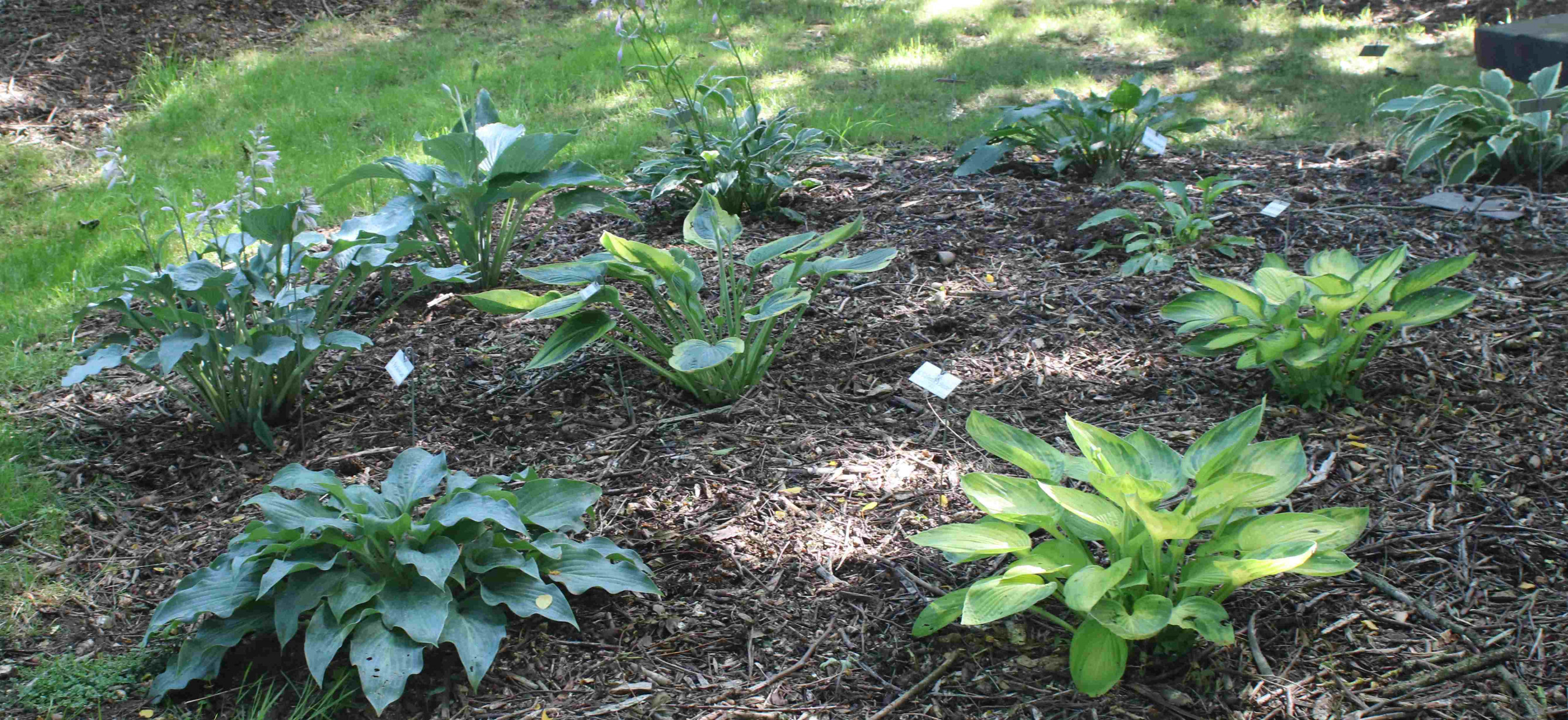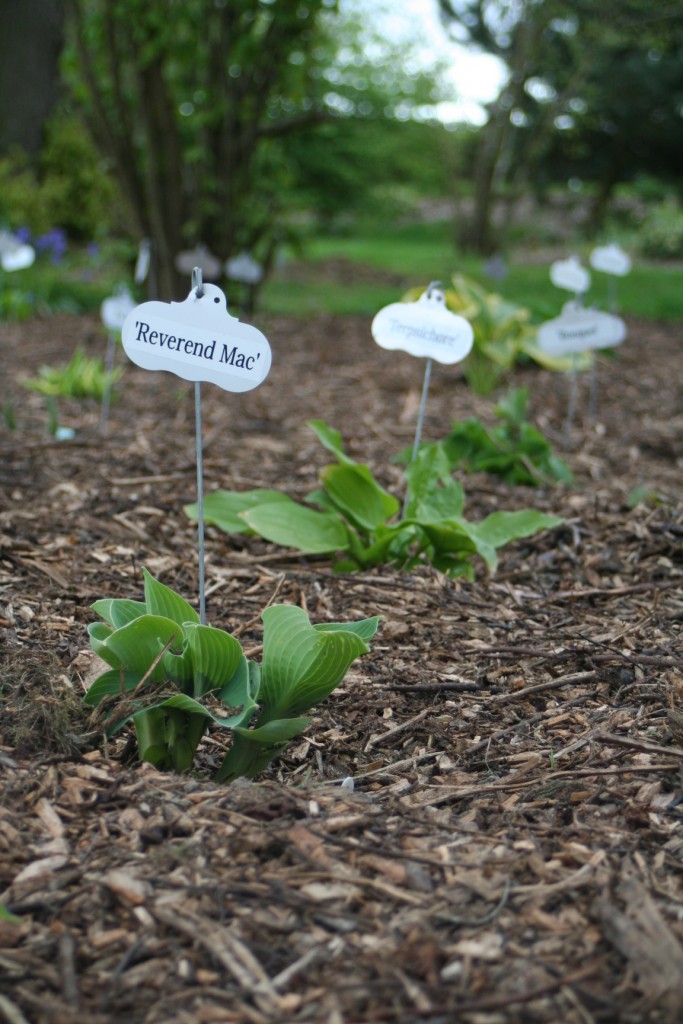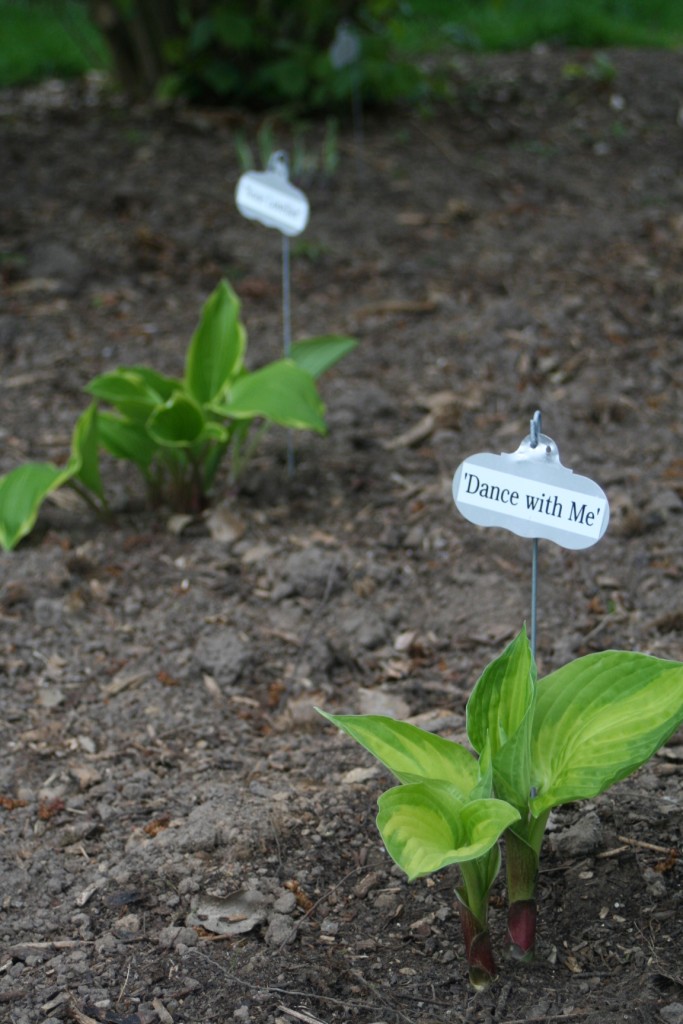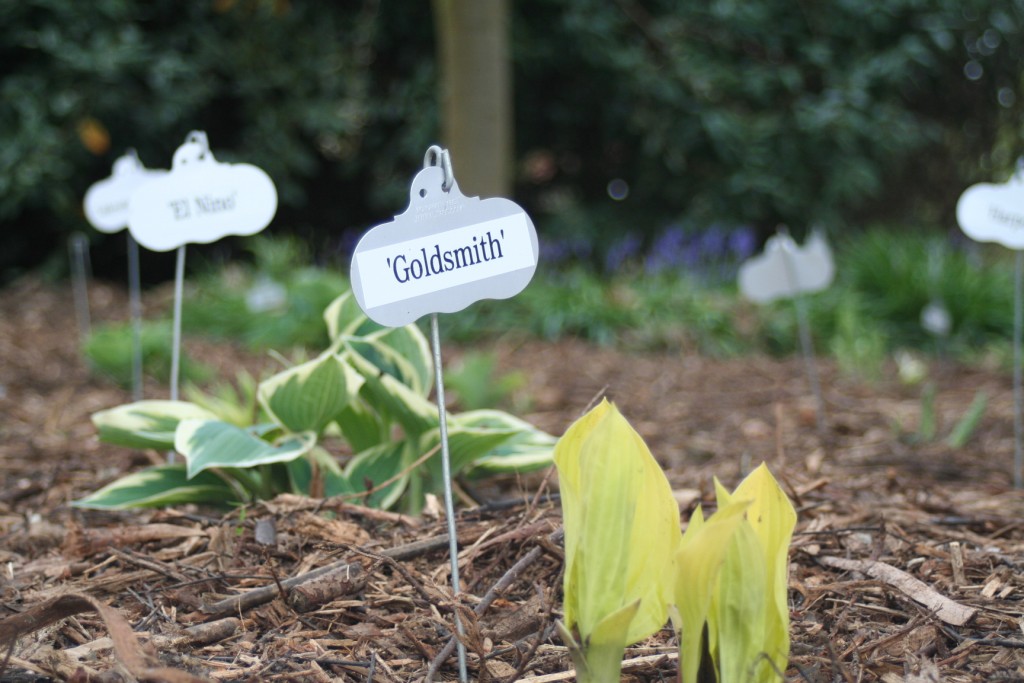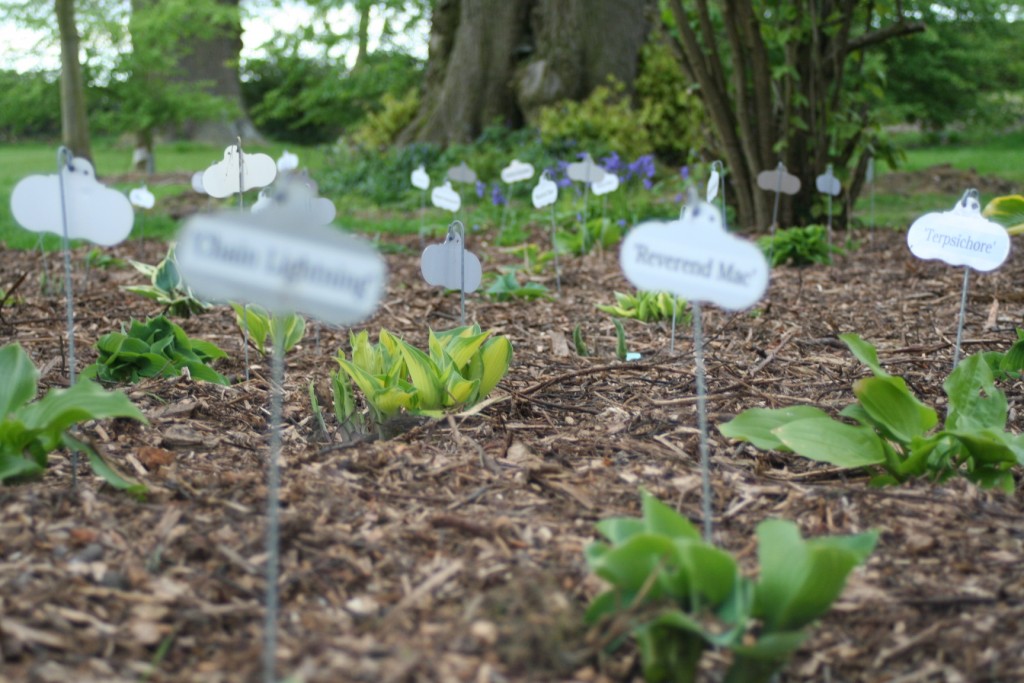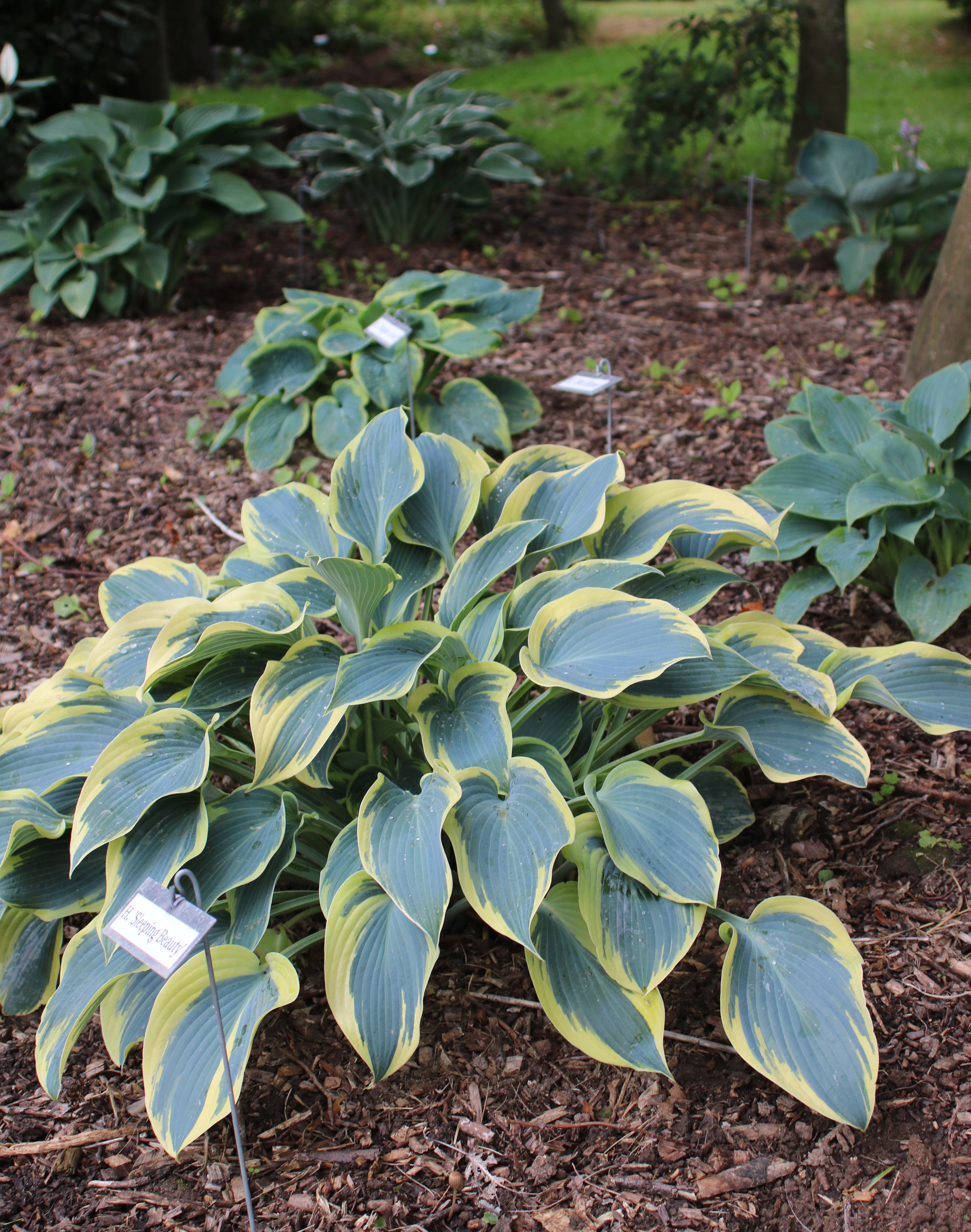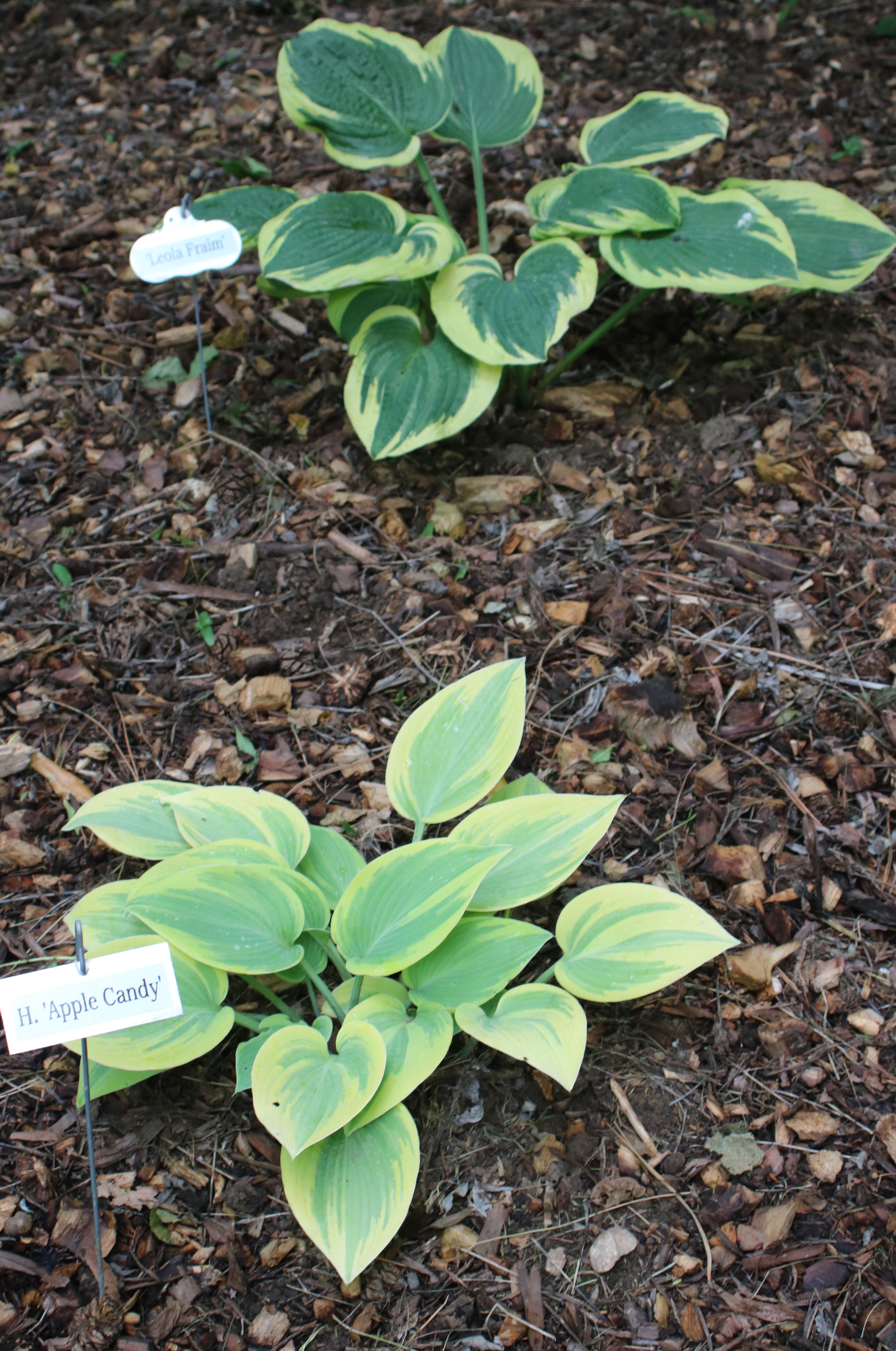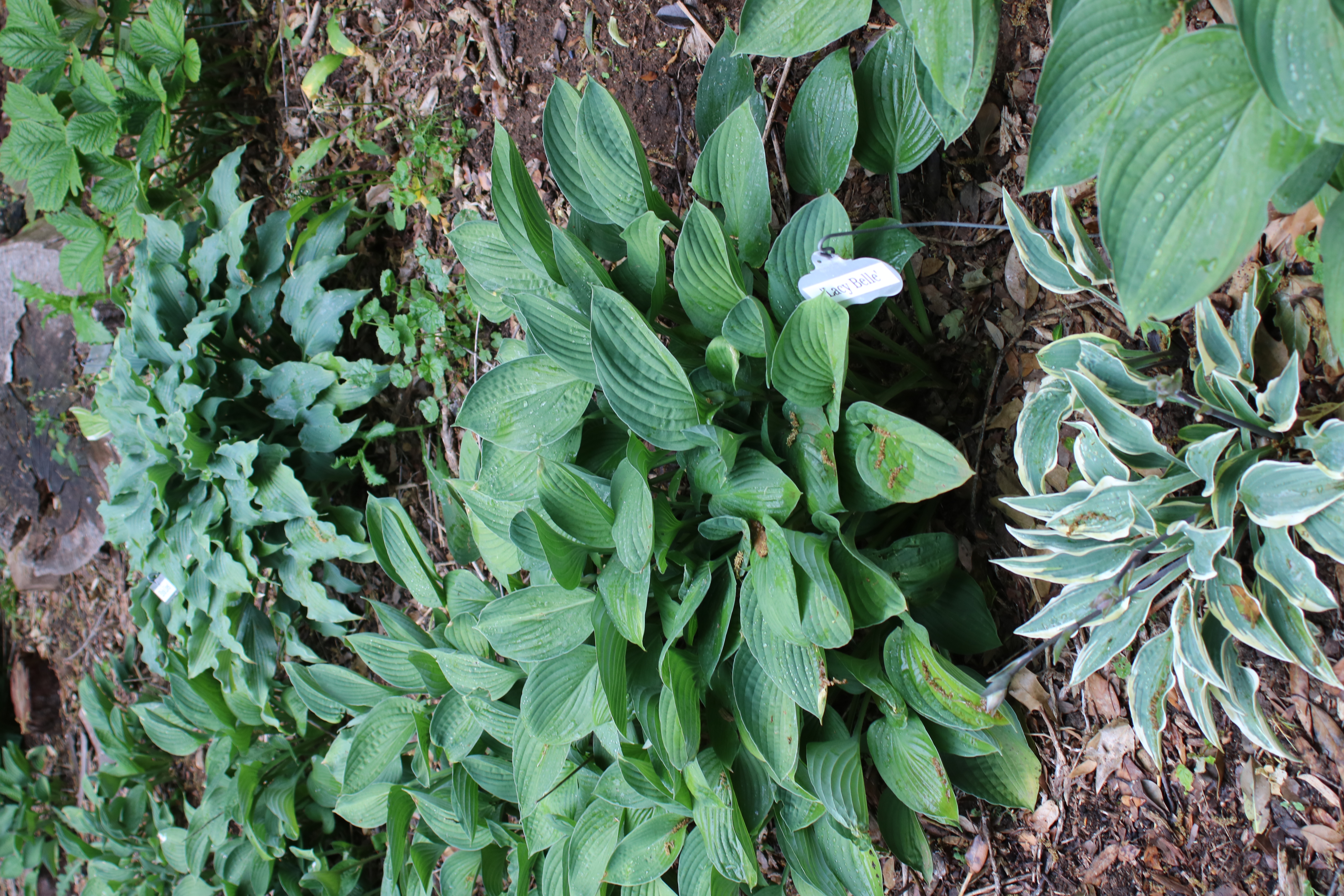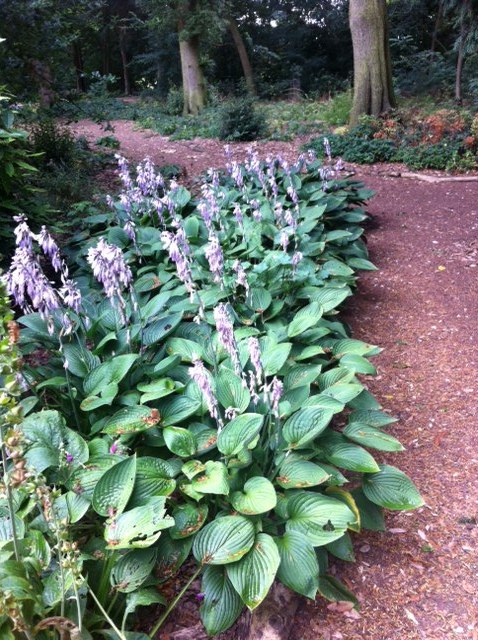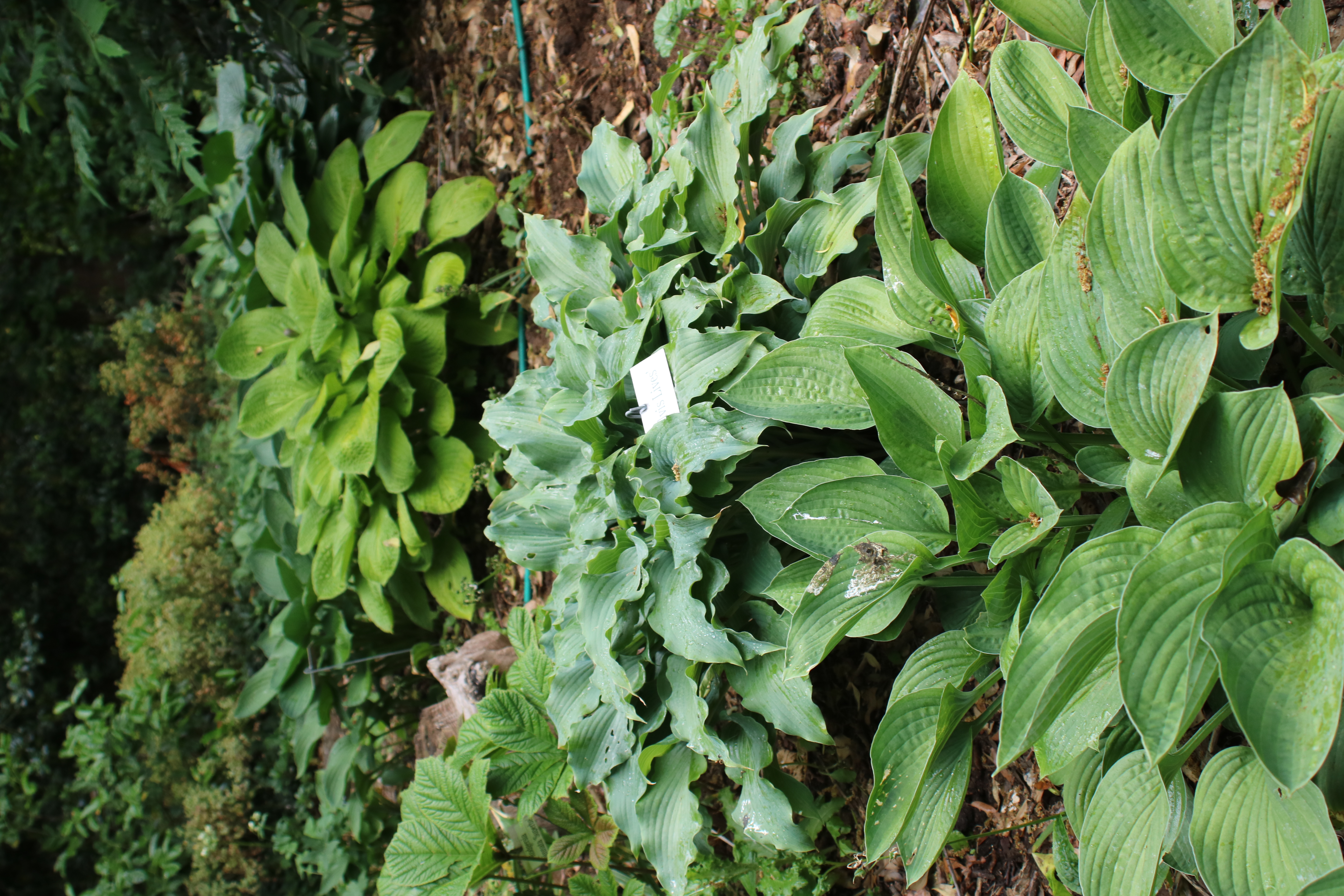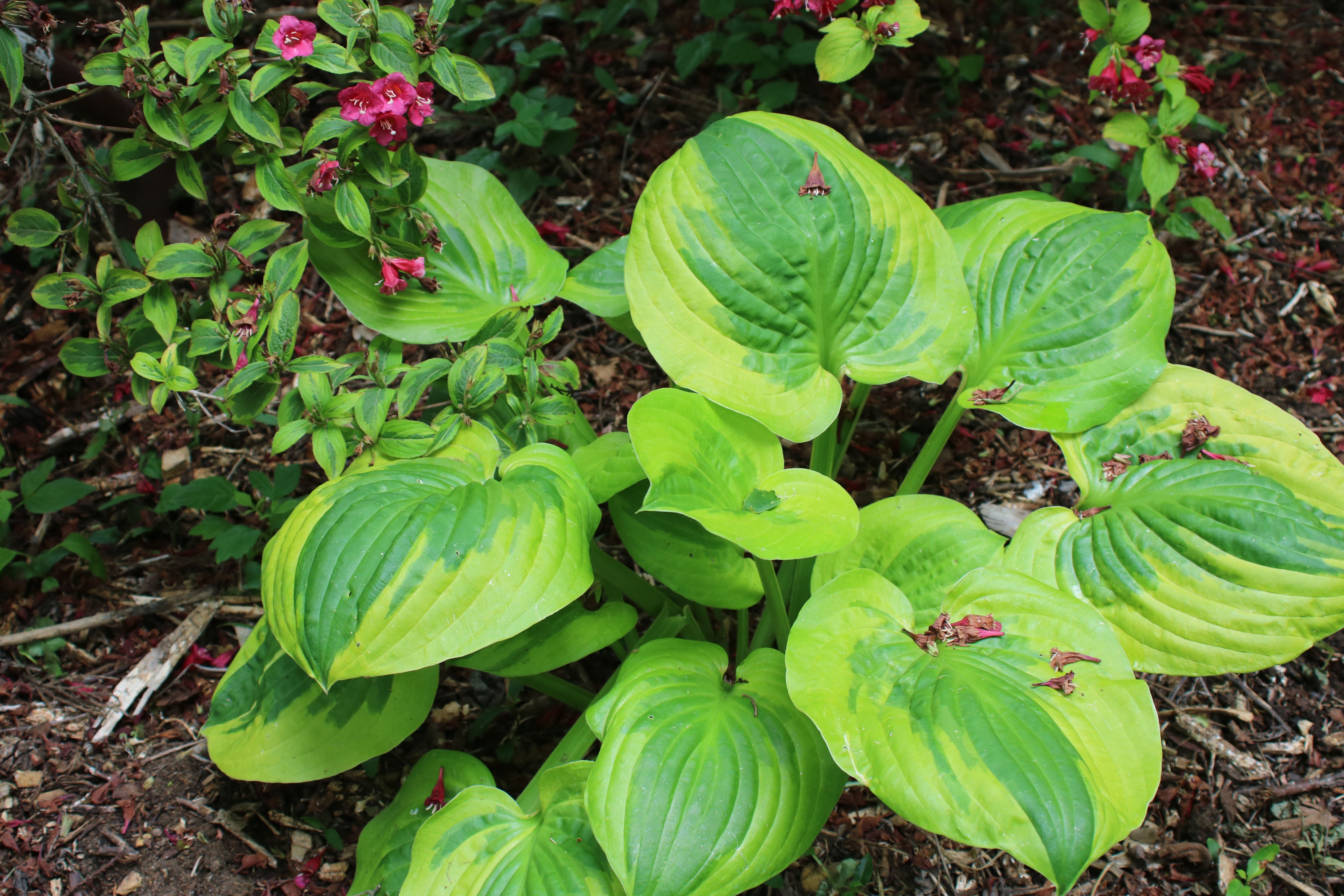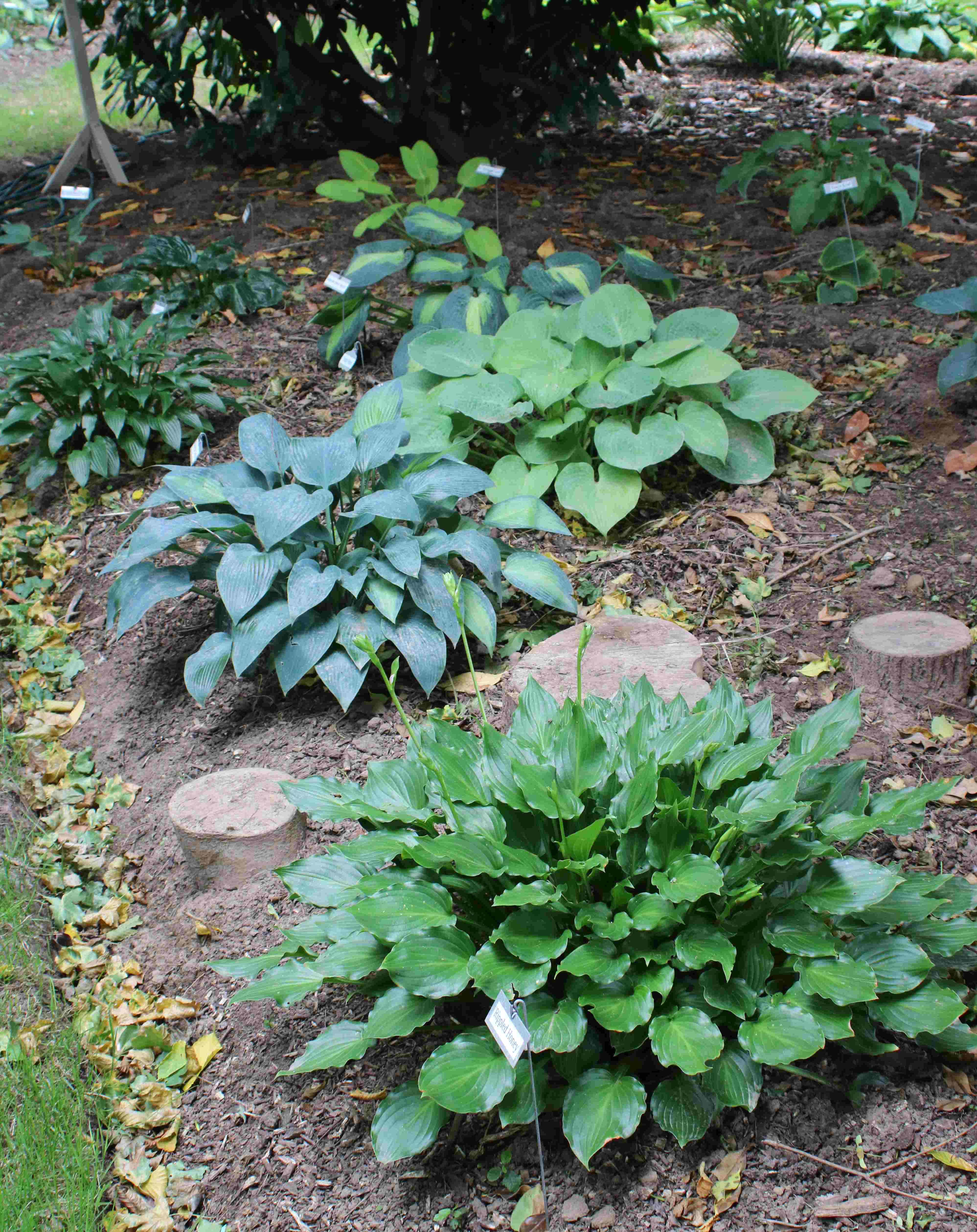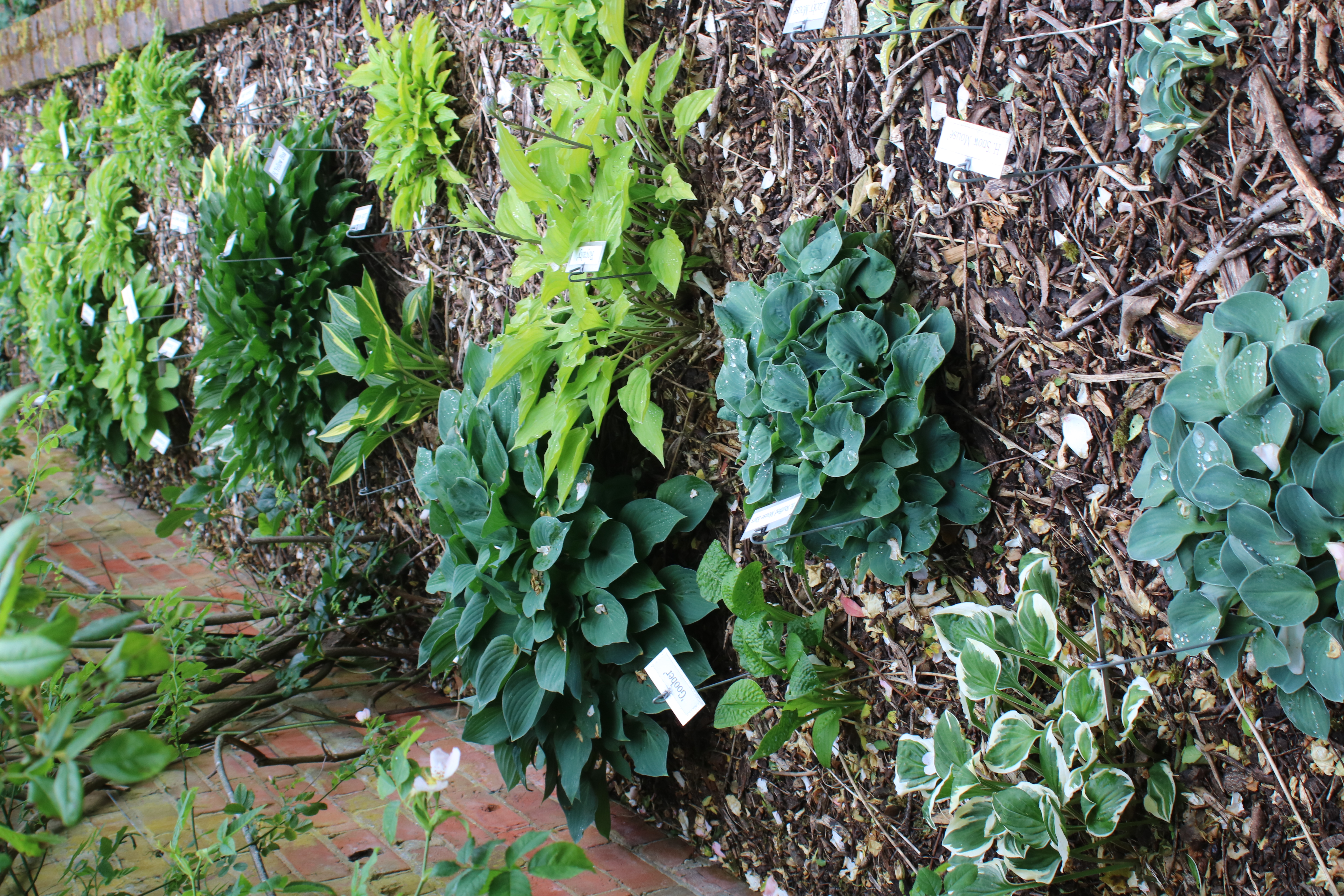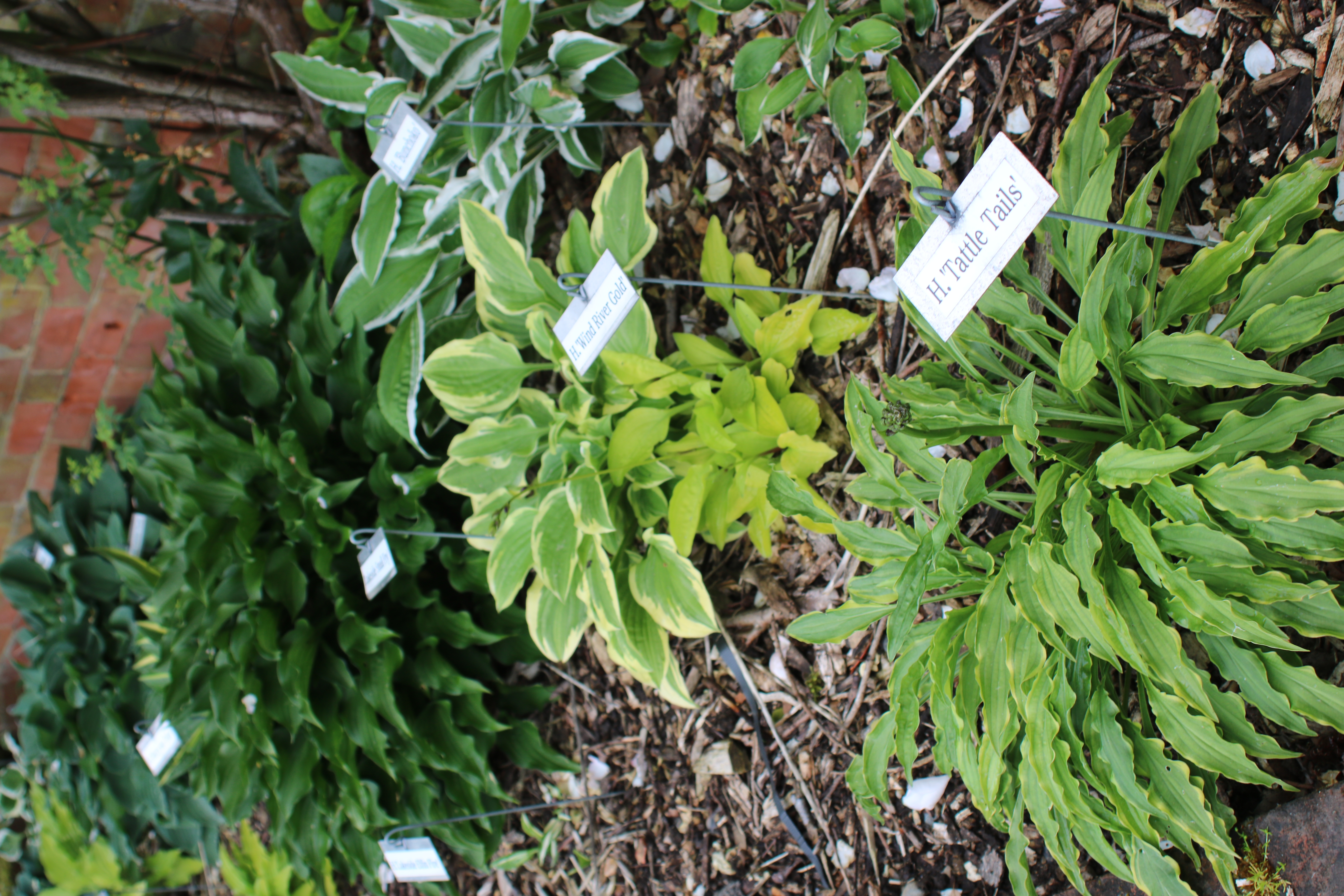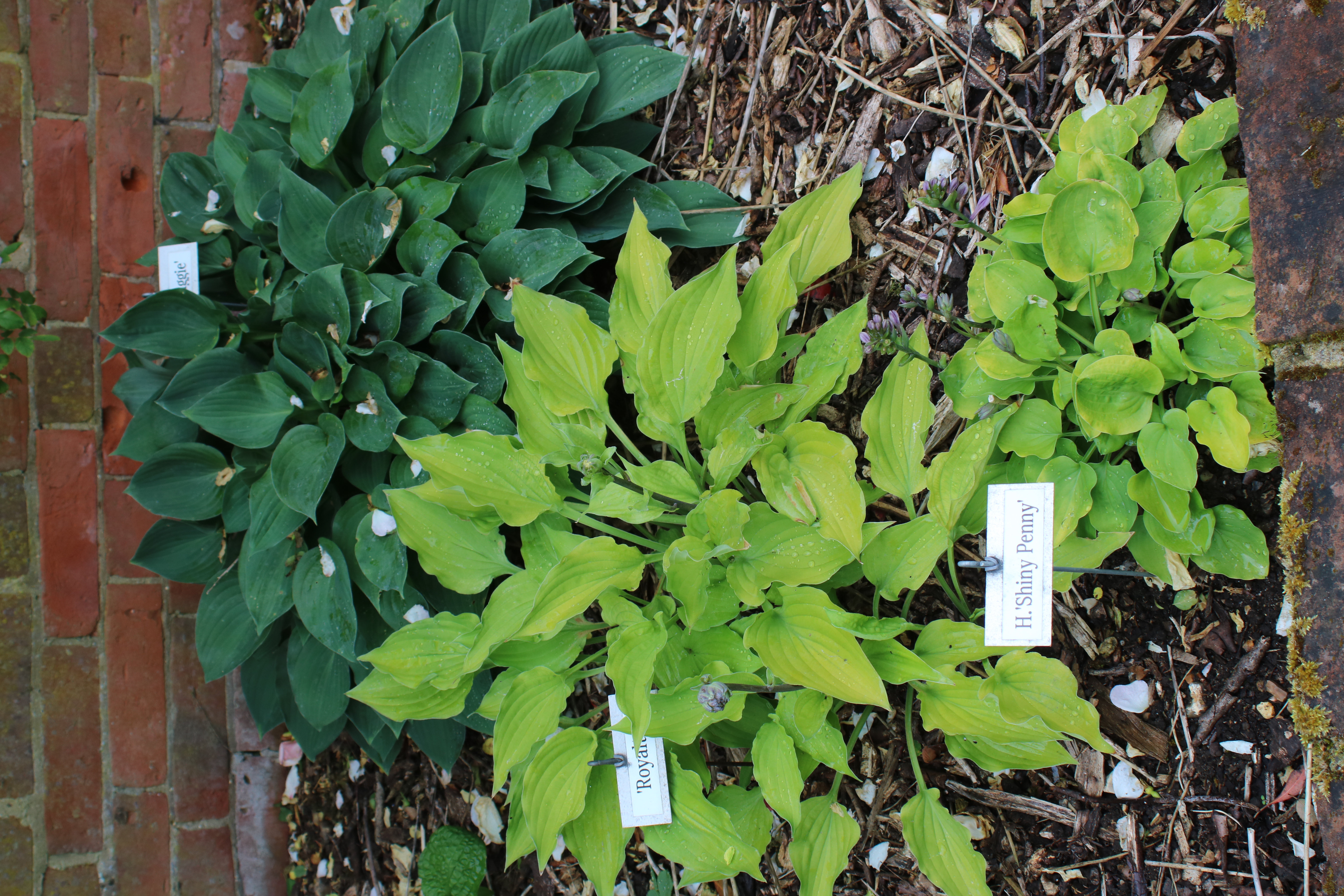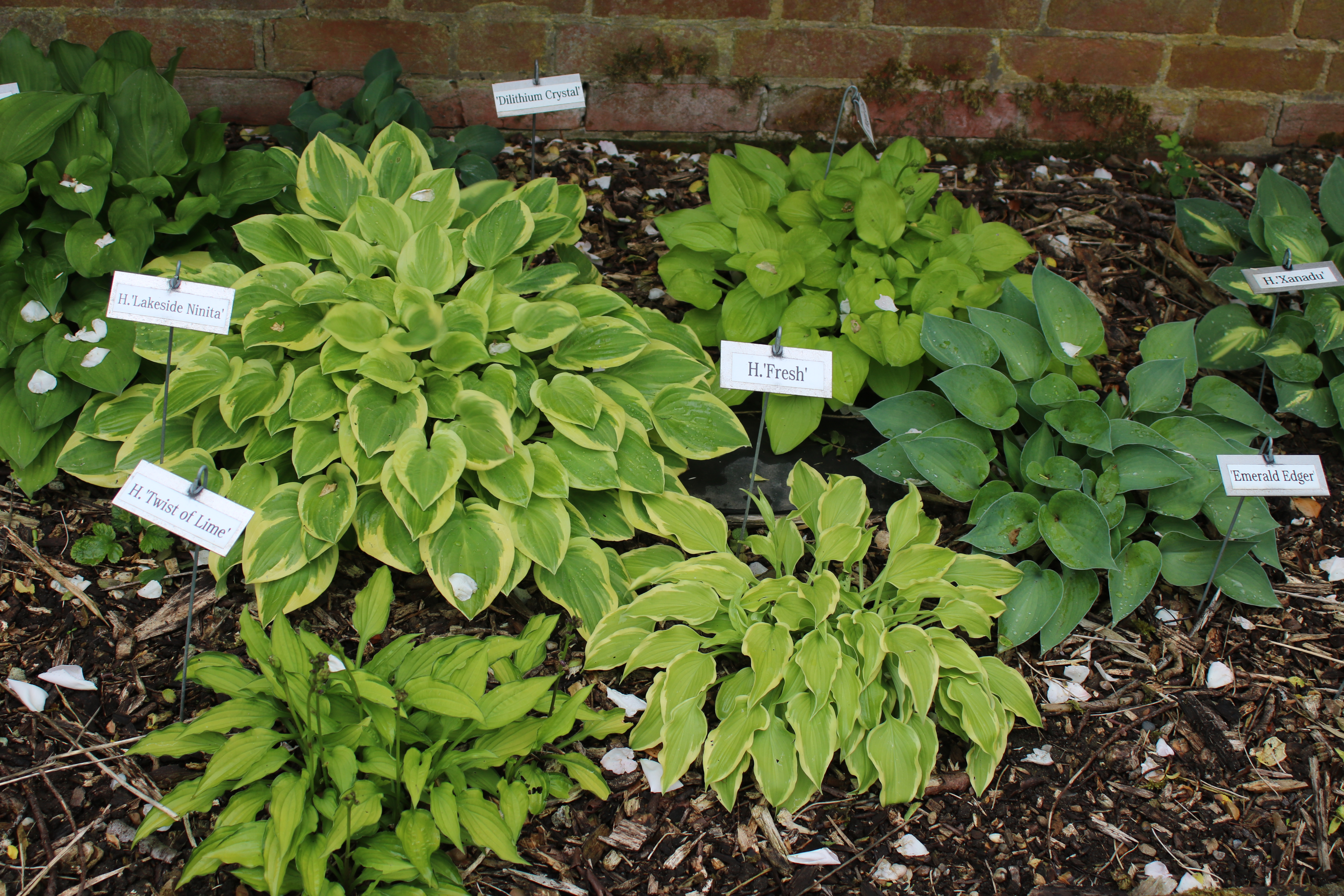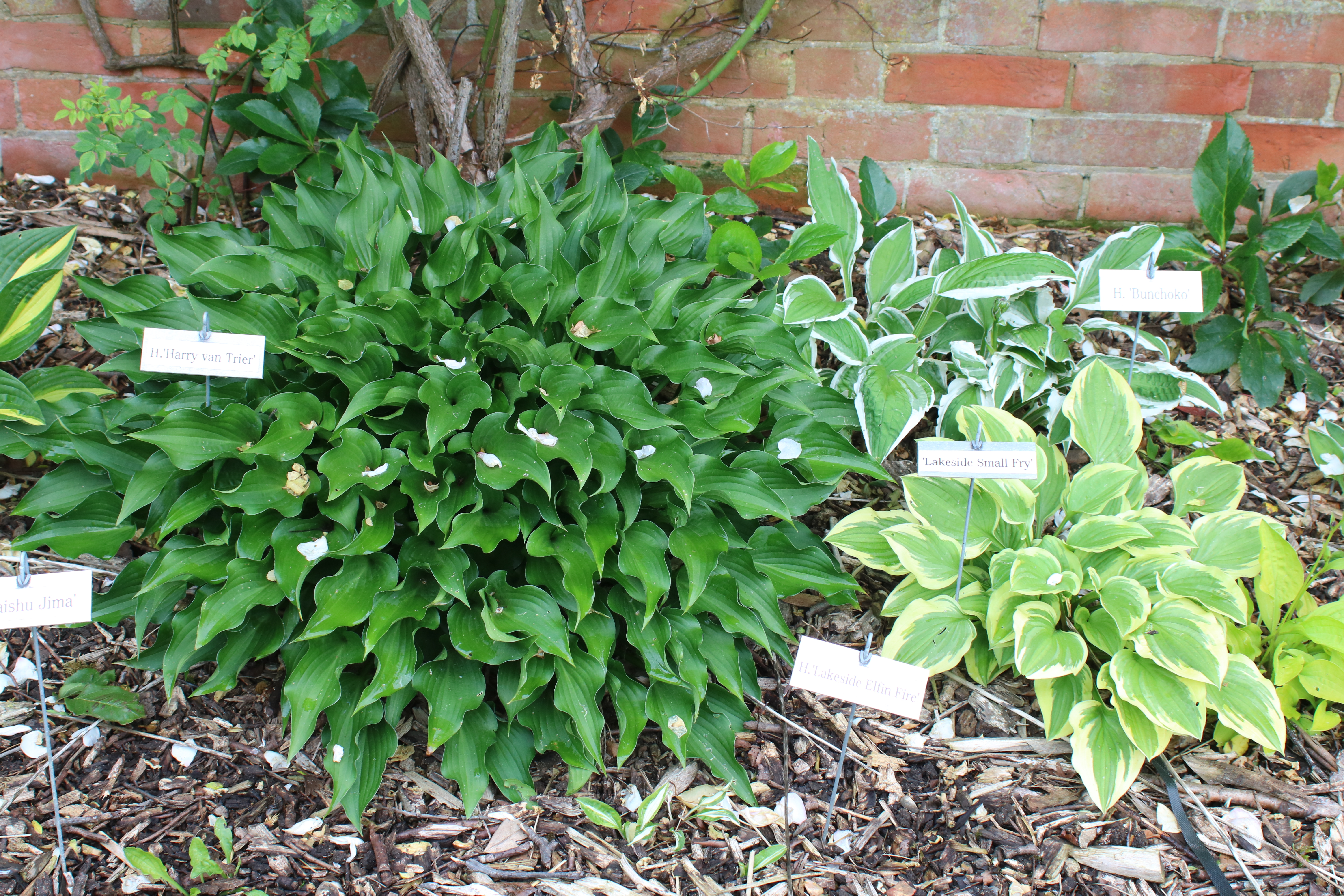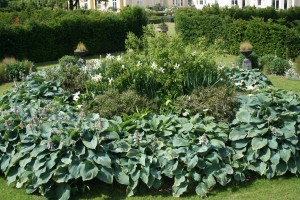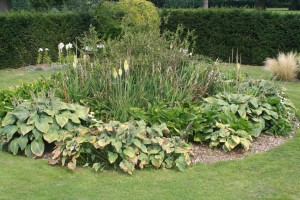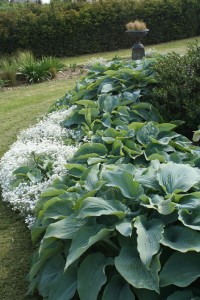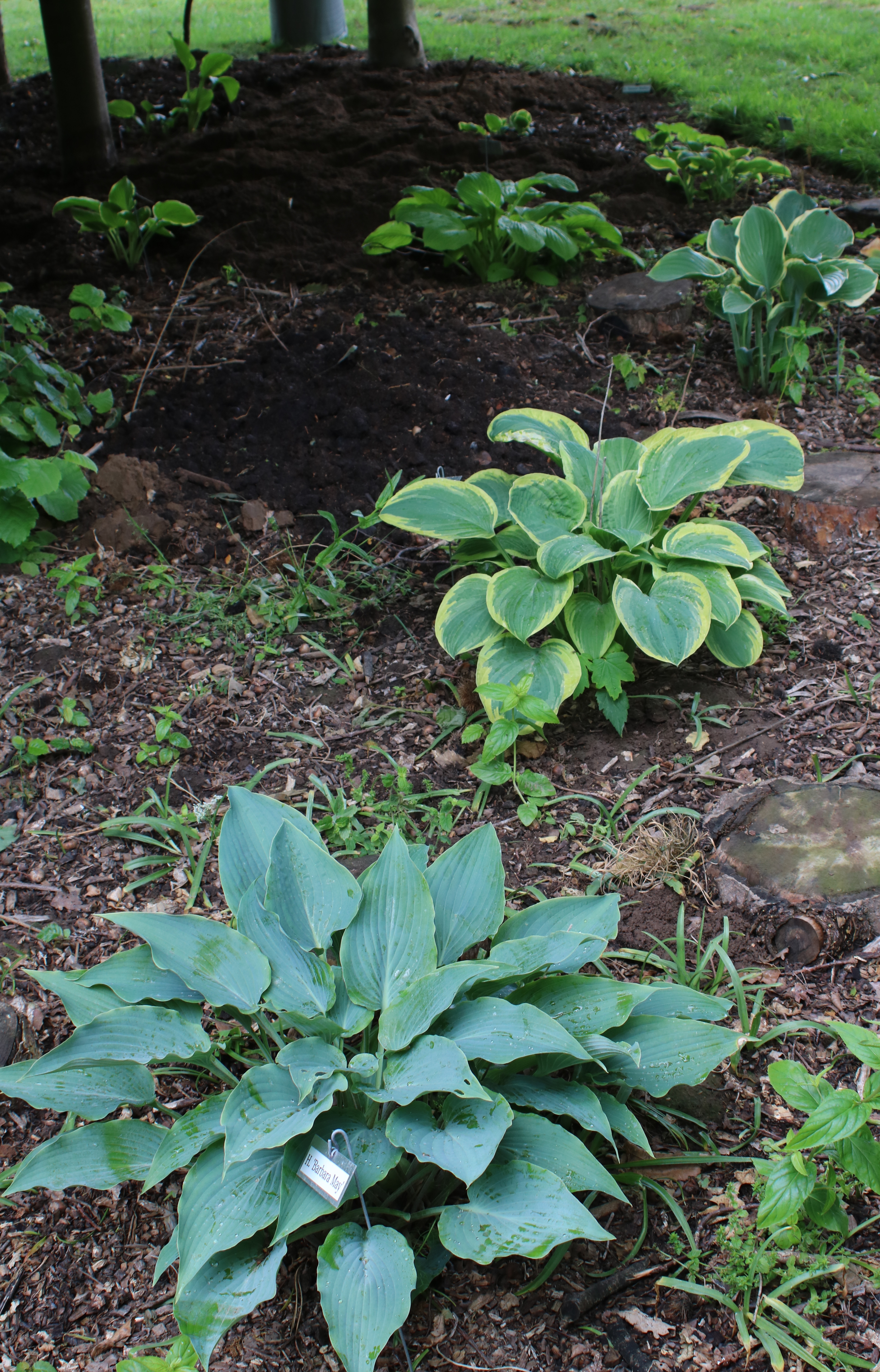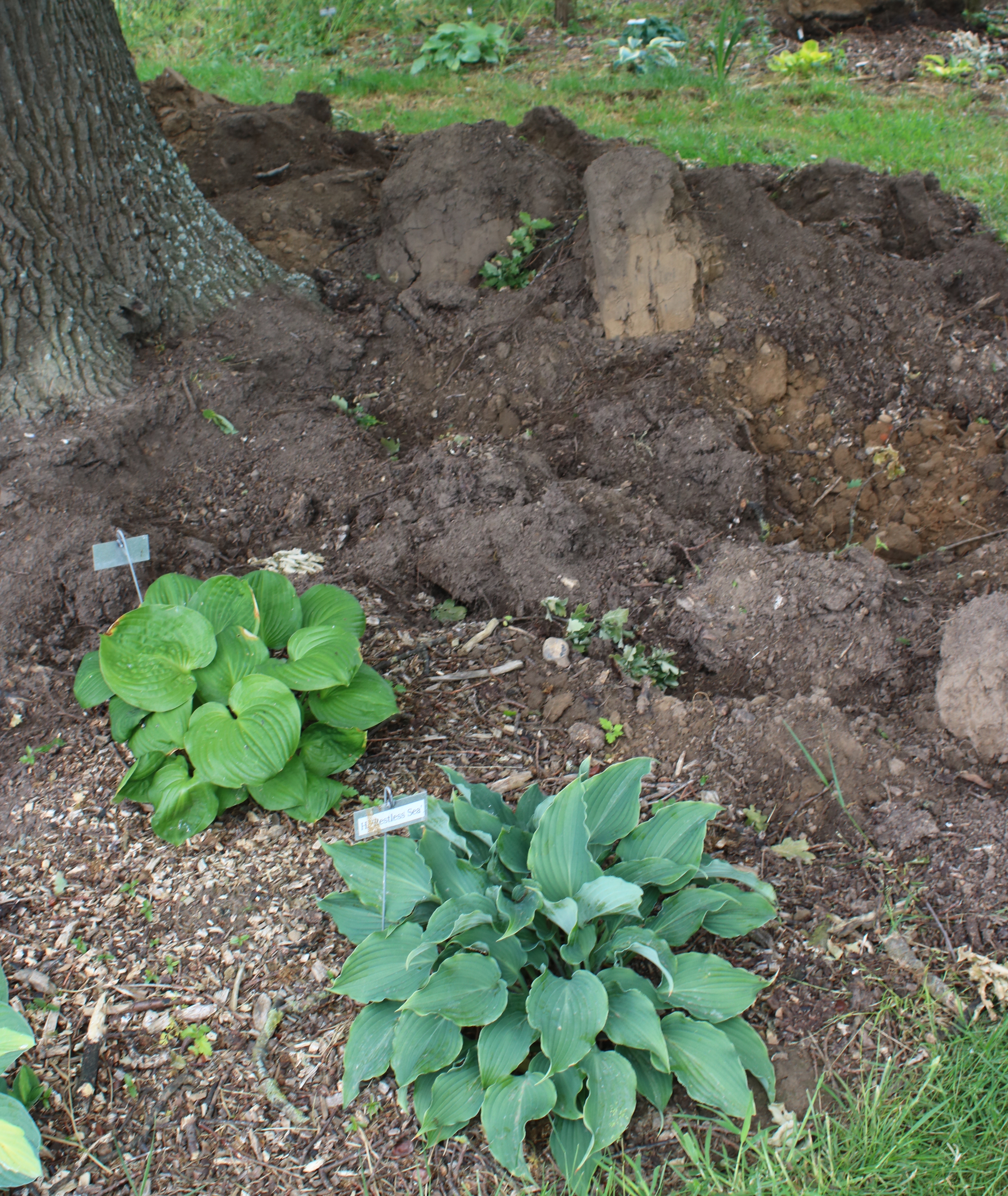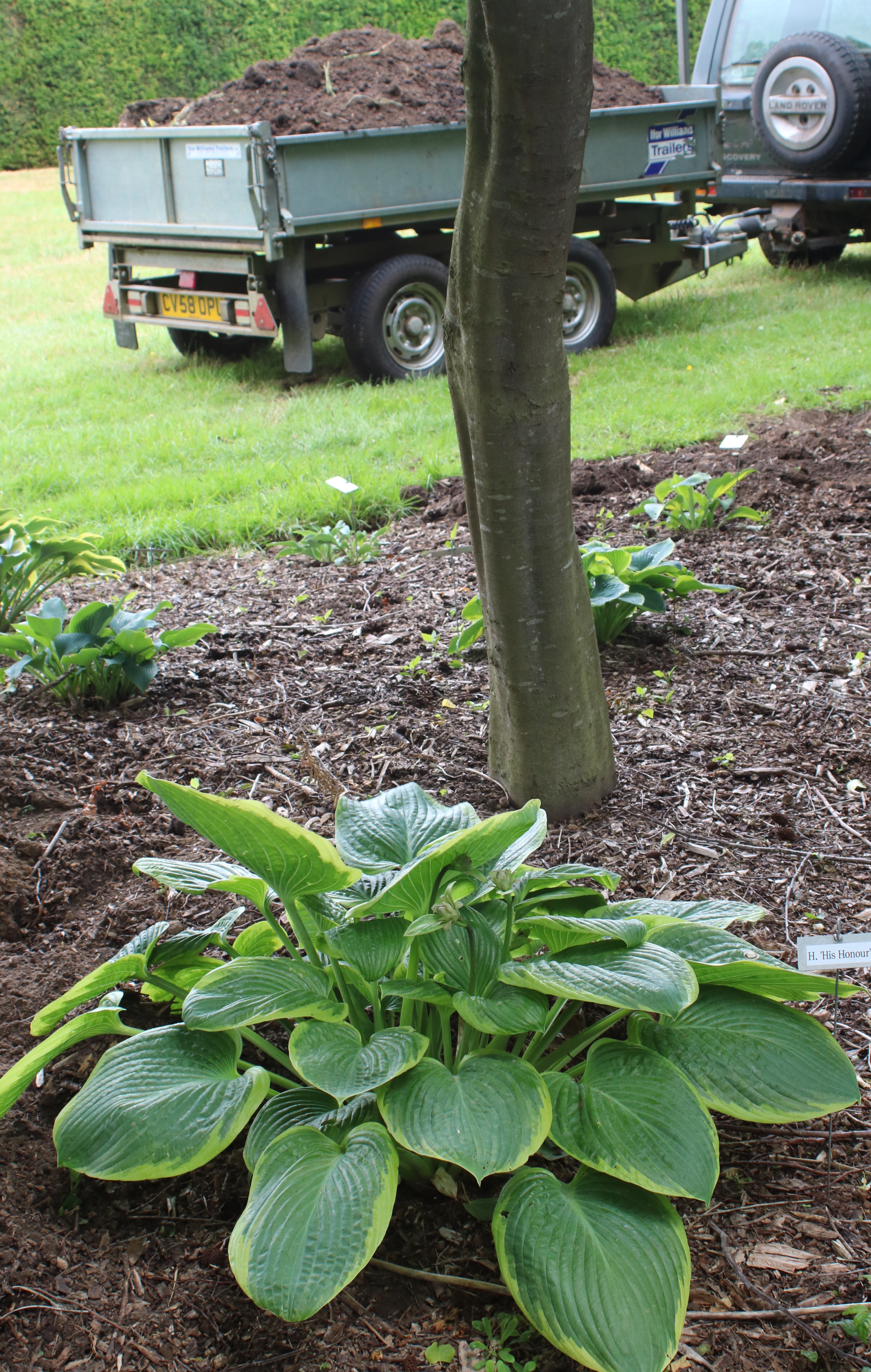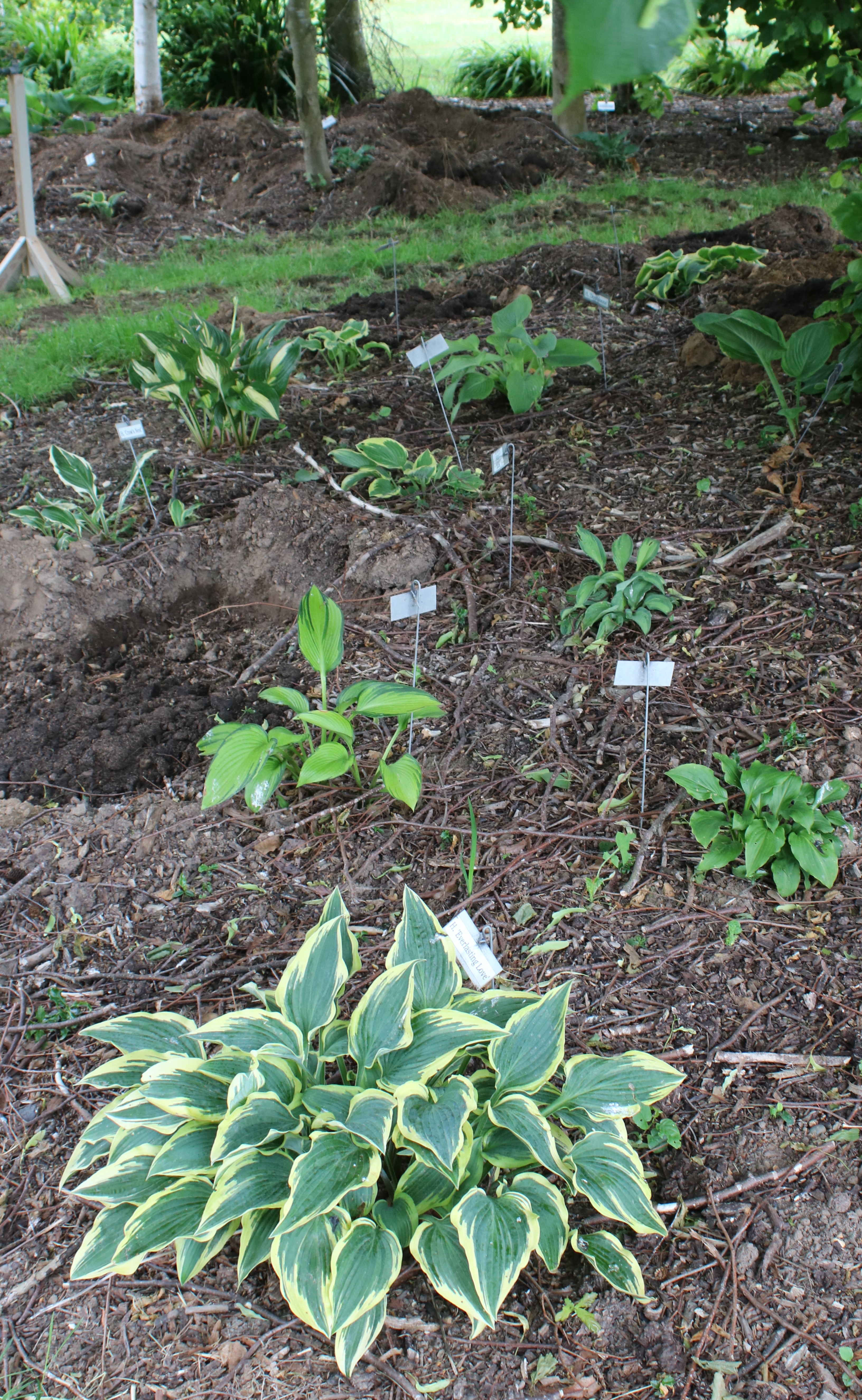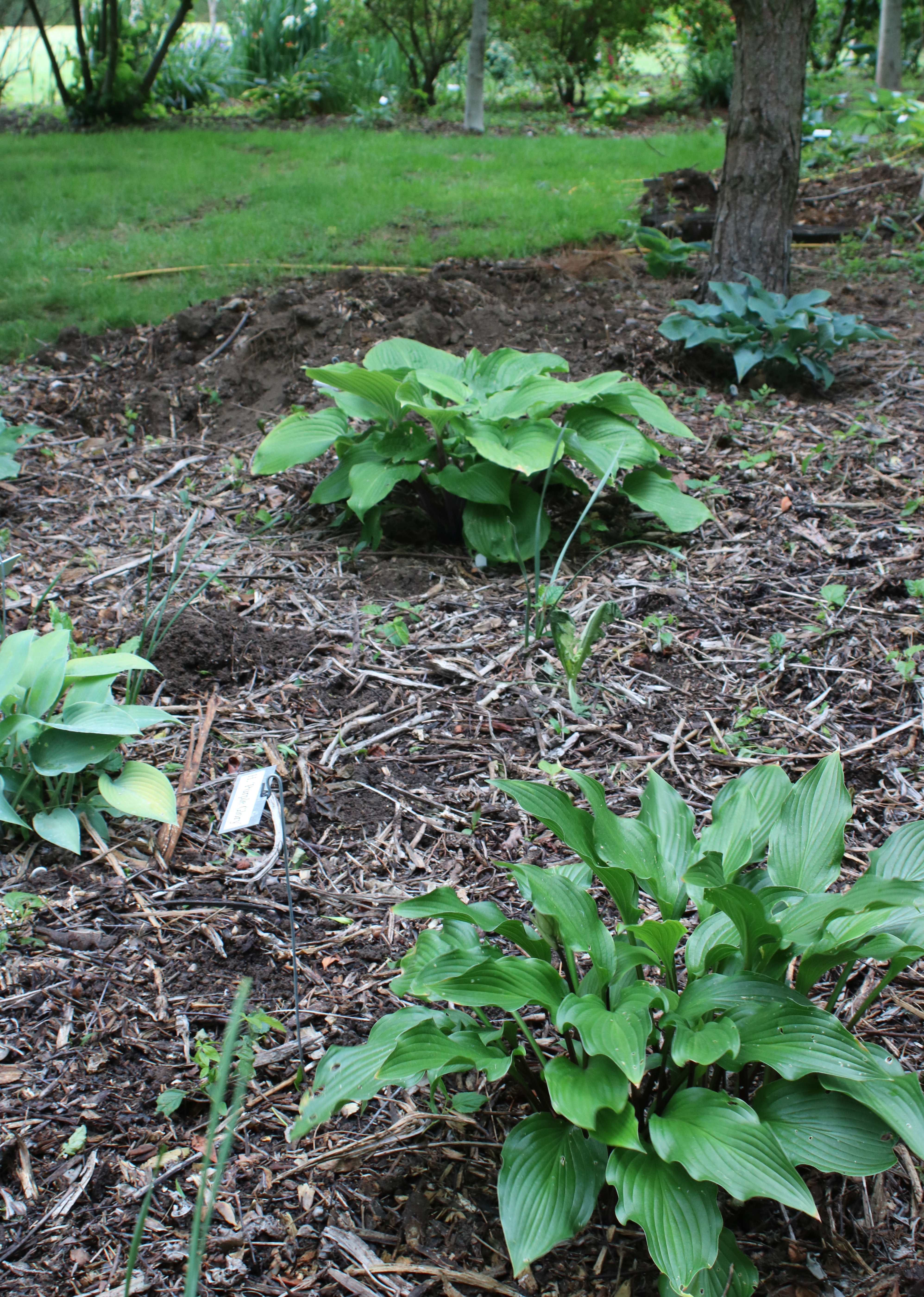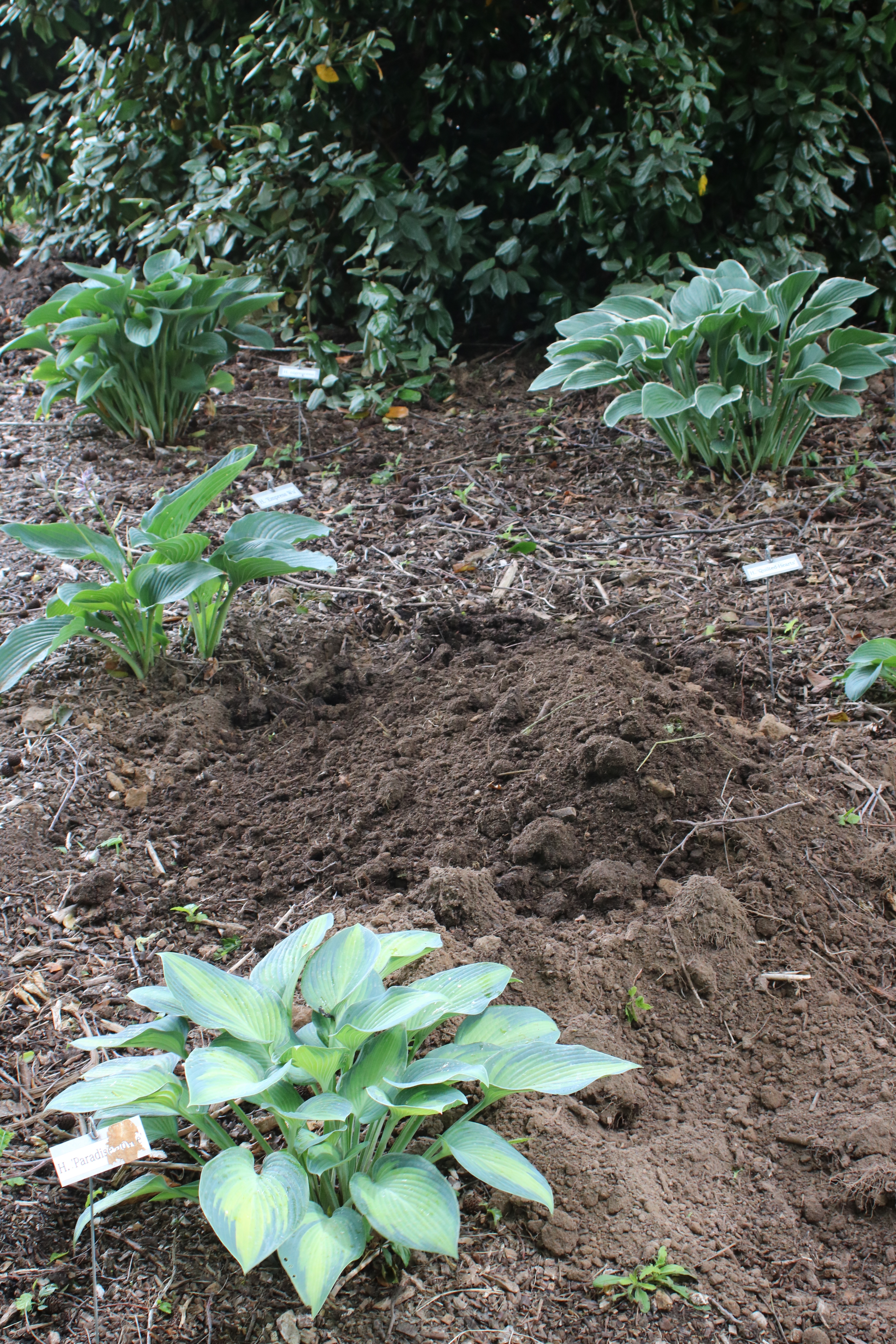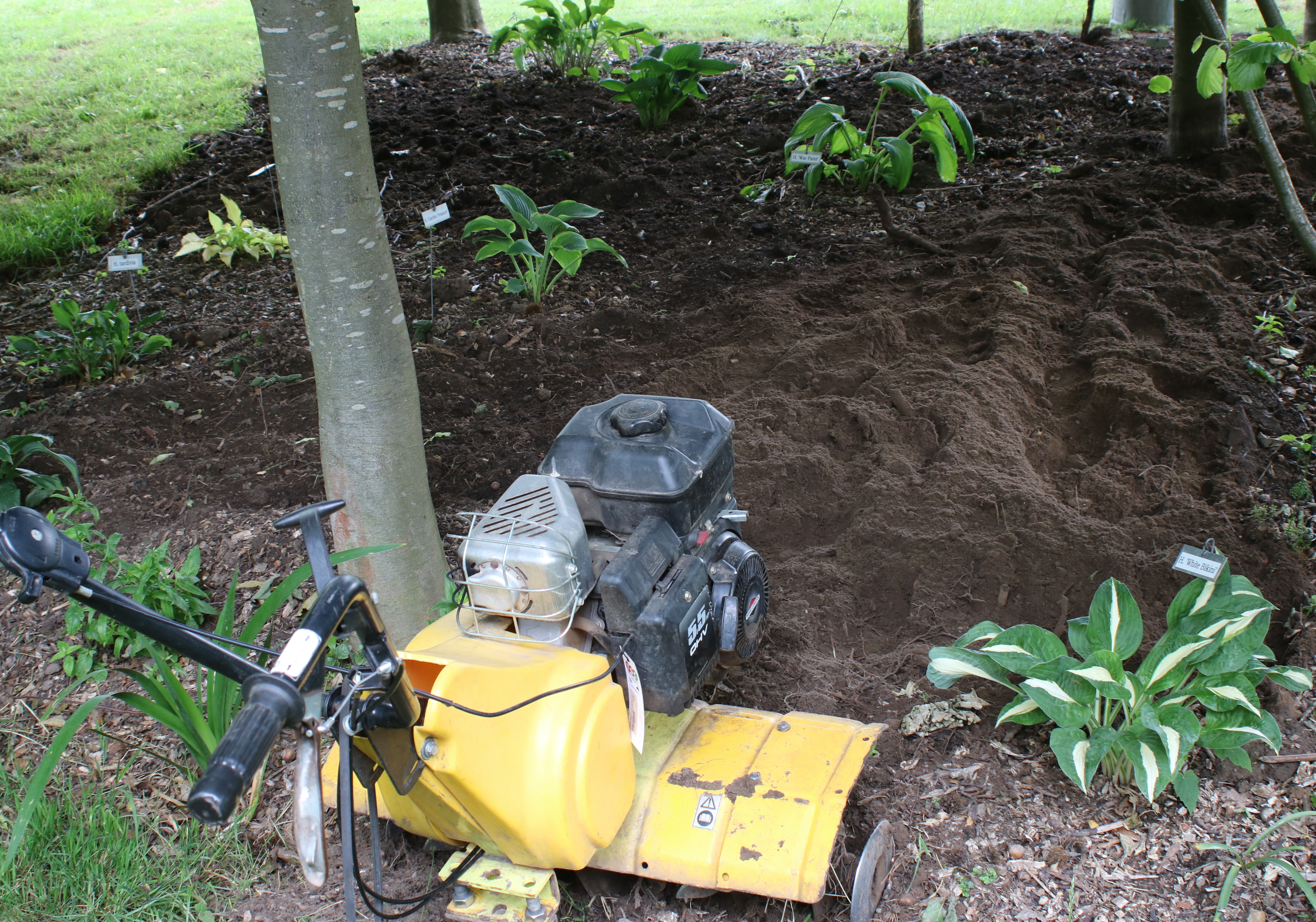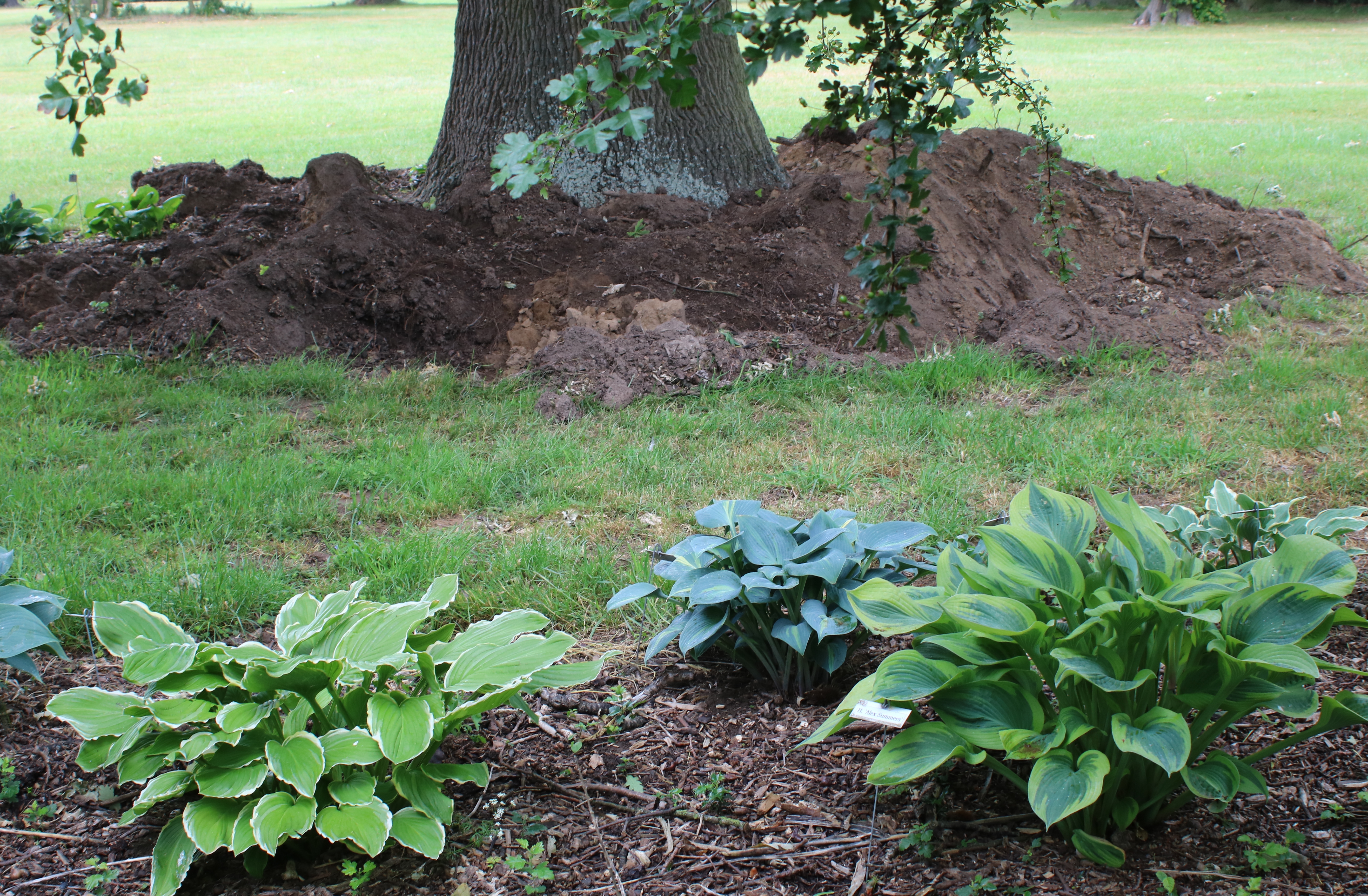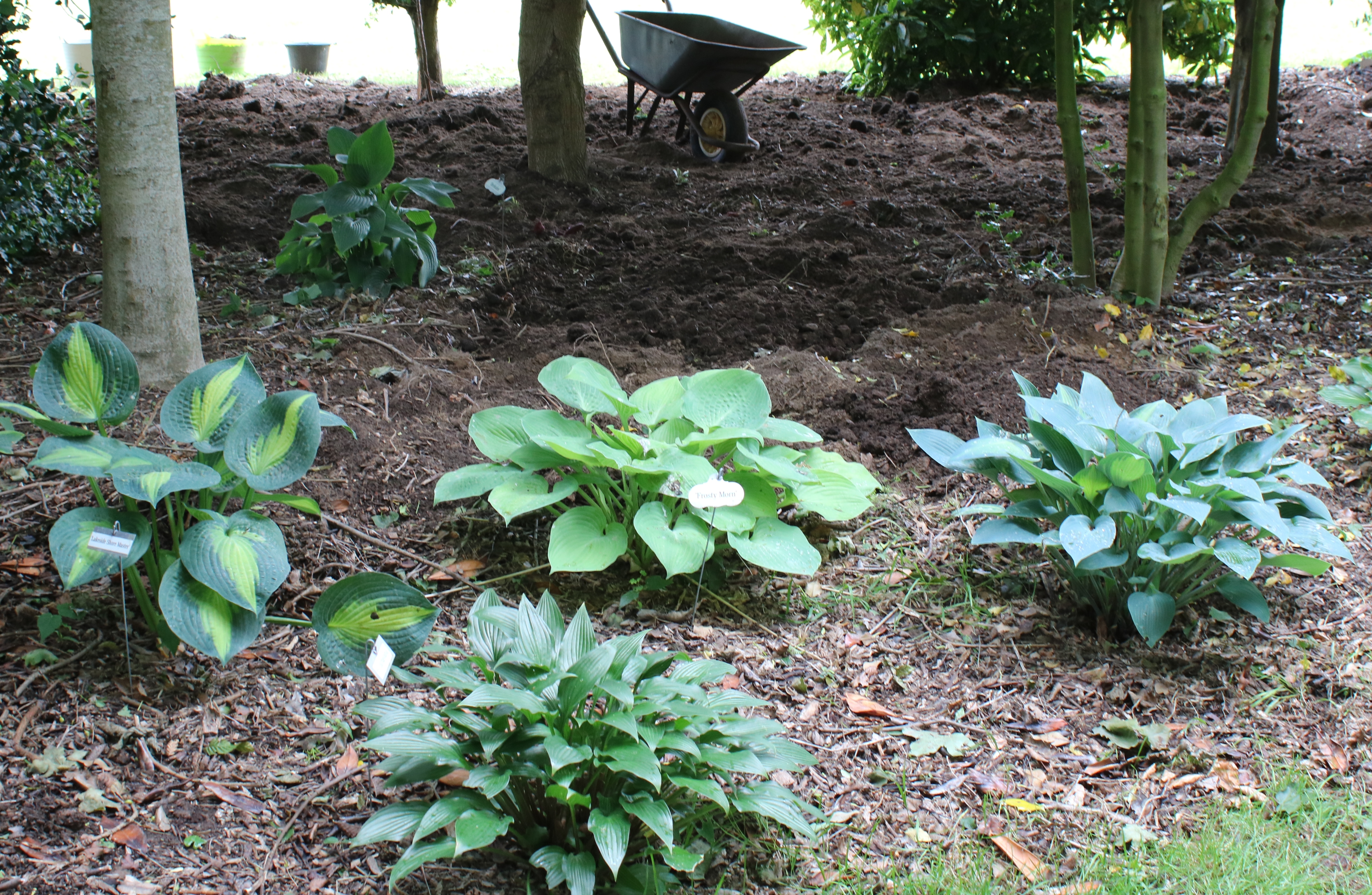Planting out in 2017.
With the arrival of Spring and some unseasonally warm weather, it was time to move some of my hostas from the comfort of their pots in the shade tunnel out into the wilds of the garden. One of the sites I’d chosen, close to the southern boundary of the property, comprised of several large, mature native trees together with many more younger shrubs and tress which we planted about 8 years ago to provide screening. It needed a good dig, the removal of a lot of tree roots and the addition of some organic matter. The area probably doesn’t provide quite as much shade as I’d like yet, but it should certainly be enough for the plants to get by and hopefully for them to thrive.
The idea now is to create a few ‘hosta-only’ beds, with different shapes, sizes and colours of hostas together with some mixed planted beds, featuring other shade-tolerant shrubs and perennials.
I’ve marked the hostas with what I hope will be permanent aluminium labels (but that’s another story for another day on another web-page). They look rather small in the big beds, despite the fact that they’ve been grown on in pots for 18-24 months after they were purchased. In fact the area appears to be more like a sculpture park than a hosta bed at the moment, but I’m sure the plants will fill out in no time!
As long as they have some shade from the afternoon sun, hostas can be planted in pots or in the ground, in woodland, by a pond, amongst other perennials or in beds of their own. I tend to favour placing them in a woodland setting alongside small trees, such as Japanese maples, and some shrubs with larger trees providing a shaded canopy. I think mixing them with too many other perennials can detract from their impact, but that’s only a personal preference.
Small and Miniature Hostas
Small and miniature hostas can sometimes get ‘crowded out’ if they’re planted together with larger varieties. It can also be more difficult to see them, even if they are positioned at the front of the bed. Consequently, small and miniature hostas are often grown either in containers, planted together in an arrangement, or in their own beds. Some miniature varieties in particular need good drainage to avoid sitting in wet soil during the winter months. Raised beds can therefore be a good option, allowing a layer of grit and a good soil/compost mix to be built up, as well as raising the plants off the ground making them easier to see.
I’ve chosen this option and have planted about 40 varieties of small and miniatures against a south facing wall, offering shade and shelter.
Hostas in Full Sun
I have experimented with growing some hostas in almost full sun. There are some hostas which are far more sun-tolerant than others. Some of the large, thick-leafed gold varieities are the best examples, such as H. ‘Sum & Substance’, H. ‘Sun Power’, and H. ‘August Moon’, together with the fragrant species H. plantaginea. Surprisingly, a large grouping of sieboldiana-types (some of which are almost certainly H.s.’Elegans’) has done well in my garden despite the sun and without any additional watering. It should be noted that Suffolk is one of the driest counties in the UK with a annual average rainfall of a little over 500mm. They’ve grown very large, with one clump measuring in excess of 3.5ft x 4ft. They do of course fall victim to the sun eventually, losing their bloom and hence turning green after flowering in July and then deteriorating further in August as the leaves start to brown. Still, the overall effect (including their magnificent display of flowers) in the middle of a white-themed garden is very pleasing. Robert Barlow from North Staffordshire Hostas measured and photographed the clump when he visited at the end of May 2015.
Replanting and extending the beds in 2020
Whilst most of the hostas I planted out from 2017 onwards have flourished, sadly, some haven’t fared so well. This may, in part, be due to natural variation of the varieties (some are better growers and easier to establish than others) and of the plants themselves. But a lot of it has to do with competition from tree roots. I can’t emphasise enough the importance of digging out as many roots as possible when planting hostas amongst trees.
Trees will out-compete the hostas, taking the available moisture from the soil, causing the plants to decrease in size year-on-year, and eventually die. Some trees are supposed to be worse than others. As hostas have shallow root-balls, logic dictates that they should do better amongst trees with deep roots such as oaks, rather than those with shallower more fibrous roots such as silver birches. I must admit, for some reason, I have not always found this to be the case. In fact, most of the plants I’ve placed between my silver birches have done better than those I’ve planted around the base of a couple of large oak trees. Conventional wisdom states that the hole you need to dig is only about twice the depth and 3 times the width of the root-ball. Again, I’ve found this to be woefully inadequate. Even using a rotavator to remove the roots down to 18 inches and 2-3 feet across hasn’t always worked.
I’ve had to resort to using a mini-digger to take out some of the larger feeder roots down to 2-3 feet and all of the fibrous roots in the whole area between the trees. This may seem like overkill and may sound like it could harm the trees, but in my experience the trees are fine (particularly if they are large and well-established) and it’s necessary for the hostas.

